Mooney M20 (Everything to Know on the Low Wing Speedster)

“Make it strong. Make it simple. Make it fast.”
To this day these are the Mooney Airplane Company’s words to live by as they design their legendary aircraft. The Mooney mentality has developed quite a following with Mooney aficionados - self-described as “Mooniacs.”
One of the Mooniacs’ aircraft of choice is the Mooney M20 because what pilot would say no to a plane that promises and actually delivers increased speed with a fuel-sipping appetite? This is the hallmark of Mooney’s well-loved low wing speedster which still had two variants in production more than 65 years after the original model debuted.
Thanks to modern technology and ceaseless innovation, Mooney Airplane Company remains devoted to its core values, making certain that each M20 model embodies robustness, straightforwardness, and tremendous speed.
Today we will look back at how the Mooney M20 got its beginning, what makes it so distinctive, and how you too can be the owner of one of the many M20 variants.

History of Mooney Airplane Company

Mooney in 1929
The Mooney Airplane Corporation was founded by brothers Albert and Arthur Mooney who had worked for another aircraft manufacturer and wanted to branch out on their own. Unfortunately, the company filed for bankruptcy a year later thanks to the Great Depression. The brothers went back to work for another aviation manufacturer until after World War II.
Mooney in 1948
The brothers restarted the company as Mooney Aircraft Incorporated. They started out with the single-place Mooney Mite M-18 before branching out to the four-place M20 which would generate multiple variant spinoffs.
The M22 Mustang was next up although it was unsuccessful. The subsequent MU-2 and Aircoupe production rights also failed to generate significant income, and the company went bankrupt in 1969. During the early 1970s, the Mooney line was continued through a series of sales to various other entities.
Mooney in 1976
The new M20J 201 and its turbocharged version, the M20K 231, were released and generated the financial success that Mooney had been hoping for. Then the recession of the early 1980s hit and sales fell again though the design team continued to improve the 201 and 231 aircraft. With the company in trouble again, it was sold to from buyer to buyer with the M20M TLS and 201AT trainer being produced in the late 1980s.
Mooney in the 90’s & Early 2000’s
The ‘90s were another slow decade for Mooney with not much traction although the M201J 201, M20R Ovation, M20M Bravo, and M20K Encore were all in production. Mooney went through bankruptcy yet another time in 2001 and its assets were again shuffled through a series of buyers. Eventually in 2004, Mooney became a publicly traded company and Gretchen L. Jahn became Mooney’s CEO – the first female CEO of a United States aircraft manufacturer. The new M20TN Acclaim, the Ovation2 GX and Bravo GX were all released between 2004 and 2006 with the M20TN Acclaim Type S following in late 2007.
The 2008 recession called for extreme cuts and layoffs. By April of 2010, Mooney had gone 18 months without producing a single aircraft thanks to a backlog of unsold planes. Throughout the next decade, Mooney continued to be in a state of flux. It was sold several more times and produced limited aircraft during this period although it did release the new M20V Acclaim Ultra and M20U Ovation Ultra. As of January 2020, Mooney’s future is again uncertain, and it is said to be seeking investors.
The company itself may have experienced plenty of ups and downs, but despite that, many of its aircraft, especially from the M20 line have excelled. To date, Mooney Aircraft Company has been awarded 21 type certificates, has produced 12,000 aircraft, and holds 130 world speed and altitude records.

(source: wikipedia.org )
Designing the mooney m20.
The 20 th Al Mooney aircraft design was appropriately christened the Mooney M20. It became his most successful design and included many variants spanning over 65 years.
The Mooney M20 got its start as an expansion of the M-18 Mite – a single place low-wing monoplane with retractable tricycle landing gear. The M-18 was marketed as a personal airplane for World War II fighter pilots following the war. Those pilots may have appreciated flying the Mite, but the single seat nature of the aircraft inherently limited the market. The Baby Boom was on, and these pilots were having families. If they wanted to take their wife and kids on an airborne adventure with them, they would need a bigger plane. Production of the M18 Mite wrapped in 1954, and the new M20 made its first flight the following year in 1955.
The premise of the M20 was to provide a four-place private plane capable of fast speeds with limited fuel consumption. The original M20 and the first variant, the M20A, both included wooden construction in the wings and tail. Following multiple in-flight breakups of water damaged wood tails, Mooney issued Mooney Service Bulletin M20-170A which corresponded to FAA Airworthiness Directive 86-19.10. All existing M20s would have their wooden components replaced with metal, and going forward, future M20 aircraft would utilize an all-metal construction.
Distinctive Design Features of the Mooney M20

The Mooney M20 line is known for including features that optimize speed and fuel efficiency. Here is what to look for in the latest Mooney designs.
Laminar Wings
The laminar wings of the M20 are inspired by the P-51 Mustang fighter planes. They are engineered for decreased drag and optimum fuel efficiency.
Carry-Through Wing Spar
Both the structural stability and the ride quality get a lift with the M20’s unique to its class carry-through wing spar. A single spar runs from wingtip to wingtip offering strength and a smooth ride.
Steel-Tube Cabin Frame
Safety is another tenant of Mooney construction and it is apparent in the 4130 Chromoly high-strength steel cage that encloses the cockpit of current M20 models.
Lowest Flat Plate Drag Area
One of the keys to Mooney’s fuel efficiency is maximizing the aerodynamics of the aircraft. The M20 has this down to a science with the current models’ flat plate drag area being roughly the equivalent to a typical computer screen.
All-Trimming Tail
From the start, the M20 has had a rather unique tail for its class. The all-trimming tail, Mooney notes, is a “strong and efficient design [that] is usually found only on turbine aircraft.” This tail configuration maximizes aircraft controllability in high angle of attack situations while eliminating trim tab drag.
Flying the Mooney M20

In real life operations, pilots have overall been very pleased with the performance of their Mooney M20s. Pilot Don Lojek owns a 1965 M20C which he has logged over 1,950 hours in. Don estimates that his M20C burns an average of just 8.1 gallons per hour. Don notes that the low seats in the M20 make you “really feel like you are a part of the airplane or vice versa.” Don’s longest non-stop flight was a 690-mile jaunt from Burbank to Boise which he made in 4.5 hours. Maintenance has been minimal, and Don continues to enjoy his M20. The only caveats he notes is that the CG loading “is a little tricky.”
Other pilots have commented that the M20 tends to float down the runway on landing and that without large flaps, the M20 is not really designed for short-field operations. The low seat can take some getting used to, especially for shorter pilots.
Variants of the Mooney M20
The original M20 was produced from 1955 until 1958 when the first variant was released. Since then, the M20 series has given rise to seventeen different variants. The M20 series has come in three fuselage lengths throughout its production run. The short body and medium body models are no longer being made, but two long body models were still in production through 2019.
The first M20 variant, released in 1958 and produced through 1960, upgraded the original 150 horsepower engine to a more powerful 180 horsepower model.
Marking the shift away from wooden components, the M20B was an all-metal aluminum construction released in 1960.
The M20C (also called the Mark 21 or Ranger) debuted in 1962 and was produced until 1978. The M20C included multiple significant improvements over previous M20s, and it became the most produced variant in the M20 series of aircraft, accounting for over a third of the pre-M20J model aircraft.
The M20C modified the existing control surfaces to allow for greater deflection control. The maximum flap angle was increased to 33 degrees. The M20C’s engine cooled more efficiently than previous variants thanks to reduced cowl flap openings. Other highlights of the M20C included a lighter empty weight paired with an increased gross weight thanks to a lightweight floor design.
The M20D was a modified M20C designed to be marketed as a trainer plane capable of competing with the Piper Cherokee 180. The M20D, released in 1963, featured a fixed-pitch propeller and fixed landing gear, though it could be upgraded with retractable gear. Production on the M20D lasted until 1966.

The M21E or Super 21 was modeled after the M20C but housed an upgraded 200-horsepower Lycoming engine when it made its 1964 debut.
The Executive 21, as the 1966 new model M21F was called, marked the first increase in fuselage length. That additional 1 foot of length was used to add 10 inches of legroom plus a third window to the cabin. The extra length called for 12 additional gallons of fuel capacity and corresponded to a 165-pound increase in gross weight.
The M20G Statesman extended the length of the M20C and included a carbureted 180 hp engine. A year after its 1968 release, Mooney started making electric landing gear and flaps standard for all planes. The M20G was produced until 1970.
1977 saw the release of the M20J also known as the Mooney 201 to denote its top speed of 201 mph. The M20J featured an improved aerodynamic shape and a 200 hp engine that earned it second place in the M20 series popularity contest, coming in right behind the M20C. The M20C was produced until 1998 and is sometimes also referred to as the Mooney 205.

The M20K, also known as the Mooney 231, was produced from 1979 until 1998. This turbocharged model housed a Continental TSI0-360-GB engine. The substitution of an intercooled engine in 1986 fixed temperature problems inherent to the original M20K and allowed the aircraft to achieve a 252-mph top speed. This sub-variant was called the Mooney 252.
The first long-body M20 arrived in 1998 with the M20L. This variant housed a unique Porsche PFM 3200 N03 217 horsepower engine. The Mooney PFM was produced through 1990.
The M20M, also called the M20M TLS (Turbocharged Lycoming Sabre) was produced from 1989 until 2006 had a 270-horsepower turbocharged engine and 3-blade propeller.

The 1994 M20R was awarded the distinction of being named Flying Magazine’s single-engine plane of the year upon its debut. The Ovation houses a 280-horsepower normally aspirated Continental IO-550-G engine in a long body fuselage.
The Eagle, as the M20S was called, was introduced in 1999 with a 244-horsepower Continental IO-550-G engine. Its partner, the Eagle 2 arrived in 2001 with a 3-blade prop and 100-pound increase to gross weight.
The Predator was a canopy-equipped single prototype plane built in 1991 for the USAF Enhanced Flight Screener competition. This variant was never developed or certified for production.
The Acclaim was released in 2006 with a turbonormalized Continental TSI0-550-G engine as a replacement for the retiring M20M.
The Ovation Ultra debuted in 2016 and is a spin-off of the M20R. It has a pilot-side door and the forward fuselage is made of a composite shell rather than the aluminum skin that has traditionally been used. Soft motor mounts dampen the engine vibration for a more comfortable ride.
The Acclaim Ultra has many of the same new features as the M20U, but it was developed from the M20TN. When it was certified, the Acclaim Ultra officially became the fastest piston single in the world .

Purchasing a Mooney M20
Mooney owners are a proud and dedicated group who enjoy getting together with other “Mooniacs.” They network through a members-only Mooney Aircraft Pilots Association . Of the over 11,000 Mooney M20s produced, more than 6,700 are still FAA-registered. A few hundred M20s have migrated to other countries like the United Kingdom and Canada.
There are plenty of online listings for available used Mooney M20s, with the M20C being the most prevalent due in part to its higher production numbers. Expect to find an M20C for $30k - $50k.
The latest models – the Ovation Ultra M20U and the Acclaim Ultra M20V – were available new directly through Mooney until they suspended operations in January 2020. The Ovation Ultra was retailing for $689,000 and the Acclaim Ultra was listed at $769,000.
Since the current models both went into production in 2016, there are a limited number of used planes on the market with prices just slightly below original retail.
Mooney M20C Specifications
- Engine: Lycoming O-360-A1D
- Horsepower: 180 hp
- Propeller: Hartzell 2-blade constant speed
- Length: 23 feet 2 inches
- Height: 8 feet 4 inches
- Wingspan: 35 feet
- Wing Area: 174 square feet
- Empty Weight: 1,526 pounds
- Gross Weight: 2,575 pounds
- Maximum Takeoff Weight: 2,575 pounds
- Maximum Landing Weight: 2,575 pounds
- Useful Load (with full fuel): 750 pounds
- Maximum Useful Load: 1,050 pounds
- Baggage Capacity: 120 pounds
- Fuel Capacity: 52 gallons
Mooney M20C Performance
- Takeoff Distance Ground Roll: 815 feet
- Takeoff Over 50 ft. Obstacle: 1,250 feet
- Rate of Climb, Sea Level: 800 feet per minute
- Top Speed: 174 kts
- Cruise Speed: 158 kts
- Stall Speed: 50 kts
- Fuel Consumption: 8.5 gallons per hour at 75% power
- Max Range: 659 nautical miles
- Service Ceiling: 17,200 feet
- Landing Ground Roll: 595 feet
- Landing Over 50 ft. Obstacle: 1,550 feet
Mooney M20U Ovation Ultra Specifications
- Engine: Continental IO-550-G
- Horsepower: 310 hp Normally Aspirated
- Propeller: Hartzell Scimitar 3-blade
- Length: 26 feet 8 inches
- Wingspan: 36 feet 6 inches
- Maximum Ramp Weight: 3,380 pounds
- Maximum Takeoff Weight: 3,368 pounds
- Useful Load: 1,026 pounds
- Fuel Capacity: 100 gallons
Mooney M20U Ovation Ultra Performance
- Takeoff Over 50 ft. Obstacle: 1,600 feet
- Rate of Climb, Sea Level: 1,300 feet per minute
- Top Speed: 197 kts
- Cruise Speed: 197 kts
- Max Range: 1,450 nautical miles
- Service Ceiling: 20,000 feet
- Landing Over 50 ft. Obstacle: 2,500 feet
Mooney M20V Acclaim Ultra Specifications
- Engine: Continental TSIO-550-G
- Horsepower: 280 hp Intercooled twin-turbo
- Wingspan: 36 feet, 6 inches
- Empty Weight: 2,380 pounds
- Maximum Gross Weight: 3,368 pounds
- Useful Load: 975 pounds
Mooney M20V Acclaim Ultra Performance
- Takeoff Over 50 ft. Obstacle: 2,100 feet
- Rate of Climb, Sea Level: 1,375 feet per minute
- Top Speed: 242 kts
- Cruise Speed: 175 kts
- Stall Speed: 56 kts
- Fuel Consumption: 20.3 gallons per hour
- Max Range: 1,275 nautical miles
- Service Ceiling: 25,000
- Landing Over 50 ft. Obstacle: 2,650 feet
Thinking about buying a plane? Check out our Flight Training Material: Maintenance & Ownership collection.

Are any mooneys mite have adjustable rudder pedals,,had to ask ??
Daniel Wall
@ Bruce, that is a typo but funny thing… many sites have that listed.
This is from another site:
Operating Weights Max T/O Weight: 2575 Lb Max Landing Weight: 2575 Lb Operating Weight: 1800 Lb Fuel Capacity: 312 lbs Lb Payload W/Full Fuel: 463 Lb Max Payload: 775 Lb
Bruce Ponder
M20C specifications: Empty Weight: 1,526 pounds Gross Weight: 2,575 pounds Maximum Takeoff Weight: 2,575 pounds Maximum Landing Weight: 1,525 pounds Is the Maximum Landing Weight really 1 pound less than the empty weight?
Leave a comment
All comments are moderated before being published
Featured products

ENTHUSIASTS & PILOTS - JOIN & SAVE!
100% free, Unsubscribe any time!
Latest Blog Posts

How to Decide if Being an Airline Pilot is Right for You

How to Become a Helicopter Pilot (Step-By-Step Guide)
Almost everyone looks up when they hear a helicopter flying overhead, right? There’s a certain mystique about helicopters and the people who pilot them. Helicopters are fast, they’re agile and they can get into places that a fixed wing aircraft couldn’t hope to. Helicopter pilots conduct search and rescue operations, they airlift wounded military members out of hot zones, they provide aerial reconnaissance, civilian medical transport and more.

Breaking Down Everything in the Cessna 172 Cockpit
Are you curious about the inner workings of a Cessna 172 cockpit? In this guide we’ll take your through each control and instrument to boost your cockpit awareness. If you're just starting flight training as a student pilot or preparing for a checkout in a new aircraft with your instructor, this guide will help you become a knowledgeable and confident pilot.
- Opens in a new window.
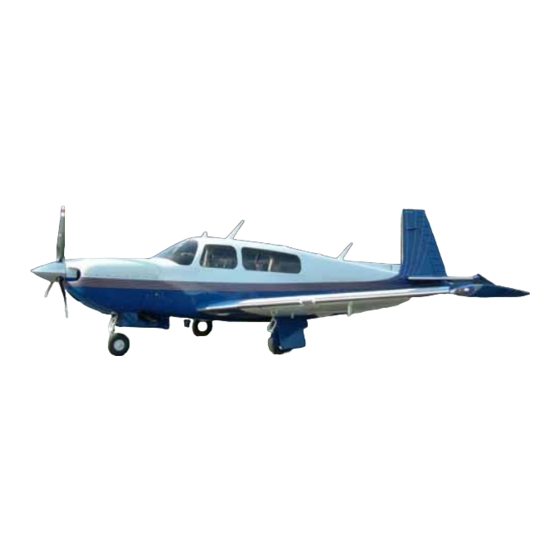
- Mooney Manuals
- Pilot operating handbook
Mooney M20M Pilot Operating Handbook
- Service and maintenance manual (399 pages)
- Service bulletin (101 pages)
- Airplane flight manual supplement (20 pages)
- page of 377 Go / 377
Table of Contents
Introduction.
- Descriptive Data
- Accessories
- Landing Gear
- Maximum Certificated Weights
- Standard Airplane Weights
- Cabin & Entry Dimensions
- Baggage Space and Entry Dimensions
- Specific Loadings
- General Airspeed Terminology & Symbols
- Meteorological Terminology
- Engine Power Terminology
- Airplane Performance & Flight Planning Terminology
- Weight & Balance Terminology
- Measurement Conversion Tables
- Airspeed Indicator Markings
- Power Plant Limitations
- Power Plant Instrument Markings
- Weight Limits
- Maneuver Limits
- Operating Limitations
- Kinds of Operation Equipment List
- Cabin Interior
- Fuselage Interior
- Informational
- Power Lossafter Liftoff
- System Blockage
- Turbocharger Failure
- Engine Power Overboost
- Engine Roughness
- High Cylinder Head Temperature
- Engine Driven Fuel Pump Failure
- High Oil Temperature
- Low Fuel Pressure
- Low Oil Pressure
- Engine Fire During Start on Ground
- Engine Fire in Right
- In Flight (Smoke in Cabin)
- Emergency Descent Procedure
- Gear Retr4Cted or Extended
- Alternate Static Source
Normal Procedures .
- Speeds for Normal Operation
- Engine Start
- Preflight Inspection
- Before Taxi
- Flooded Engine Starting
- Warm Engine Starting
- Before Takeoff
- Climb (Cruise Climb)
- Taxi after Landing
- Securing the Aircraft
- Aileron System
- Rudder System
- Rudder Trim System
- Stabilizer Trim System
- Annunciator Swtch Panel
- Construction
- Nose Gear Steering
- Taxiing and Ground Handling
- Baggage Compartment
- Emergency Exension System
- Cargo Restraint
- Emergency W T S
- Engine Controls
- Engine Instruments
- Engine Operation and Care
- Engine Cooling Air
- Exhaust System
- Fuel Injection
- Turbocharger System
- ENGINE Startlng SYSTEM
- ALTERNATOR & Ballery
- Circuit Breaker Panel
- Annunciator Panel
Handling. Service and Maintenance II"Lyefe6Nte'fit'
- Engine Lubrication
- Induction Air Filter Servicing
- Gear and Tire Servicing
- Engine Performance Checks
- Propeller Care
- Exterior Care
- Interior Care
- Airman Information. Advisories. and Notices. Faa Airman's Information Manual
- Advisory Information
- Flight Planning
- Inspections-Maintenance
- Special Conditions Cautionary Notice
- Turbulent Weather
- Walkaround Inspections
- Flight in Turbulent Air
- Mountain Flying
- Vfr-Low Ceilings
- Stalls. Spins and Slow Flight
- Vertigo-Disorientation
- Vfr at Night
- Standard Procedure
- Take-Offand Landing Conditions
- Vortices-Wake Turbulence
Faa Approved
- Backup Battery
- Standby Instruments and the Gi 275 Adi
- Definitions
- Functions Included in this Installation
- Heading Operational Area
- Limitations
- Magnetic Variation Operational Area
- Minimum Software Version
- Adahrs Normal Operating Mode
- Aerobatic Maneuvers
- Electronic Standby And/Or Primary Instrument Power
- Navigation Angle
- Standby And/Or Primary Flight Instruments
- Autopilot Disconnect
- Moving Maps
- Sensor Selection
- Synthetic Vision
- Terrain Display
- Terrain/Taws Alerts
- Datalink Products (Siriusxm and FIS-B)
- Fuel Computer
- Stormscope Display
- Surface Operations
- Traffic Display
- Database Updates
- Glove Usage
- Portable Electronic Devices
- Service Required
- Kinds of Operations
- Minimum Flight Crew
- Emergency Procedures
- Mergency Rocedures
- Abnormal Procedures
- Warnings, Cautions, and Advisories
- Normal Procedures
- Eis Operation
- Performance
- Weight and Balance
- System Description
- Controls Overview
- Display Brightness
- System Power Sources
- System Status
- Crew Profiles
- Integrated Standby System
- Gps Approach Mode Annunciations
- Aircraft Audio Interface
- System Settings
- Primary Adi
- System Data Logging
- Autopilot Interfaces
- Terrain Awareness and Alerting
- Engine Indication System
- Wireless Functions
- Section 1 - General
- Use of the Supplement
- Abbreviations and Terminology
- Installed Equipment Interfaces
- Installed Features Checklist
- Section 2 - Limitations
- Autopilot Malfunction / Pitch Trim Runaway
- Section 3 - Emergency Procedures
- Autopilot Failure / Abnormal Disconnect
- Yaw Axis Failure / Abnormal Yaw Damper Disconnect
- Esp Activation
- Overspeed Protection (Maxspd)
- Pitch Trim Failure
- Underspeed Protection (Minspd)
- Autopilot Pre-Flight Test Fail
- Loss of Navigation Information
- Section 3A - Abnormal Procedures
- Loss of Airspeed Data
- Loss of Altitude Data
- Loss of Gps Information
- Elevator Mistrim
- Heading Data Source Failure
- Yaw Damper Disconnect
- Flight Director / Autopilot Normal Operating Procedures
- Gfc 500 Power up
- Section 4 - Normal Procedures
- Altitude Hold (Alt) Mode, Manual Capture
- Indicated Airspeed (Ias) Mode
- Manual Autopilot Disconnect
- Vertical Modes
- Vertical Speed (Vs) Mode
- Vertical Navigation (Vnav)
- Manual Pitch Trim with Autopilot Engaged
- Heading Mode (Hdg)
- Lateral Modes
- Navigation (Gps)
- Navigation (Vor)
- Track Mode (Trk)
- Ils Approach
- LOC APPROACH (GS Out)
- Gps Approach (Lp, Lnav)
- GPS APPROACH (LPV, LNAV/VNAV, LP+V, or LNAV+V)
- Loc Bc Approach
- Vor Approach
- Disabling Esp
- Section 5 - Performance
- Section 6 - Weight and Balance
- Afcs Overview
- Section 7 - System Description
- Autopilot Control Unit and Display
- Messages and Annunciations
- Preflight Test
- Section 1. GENERAL
- Capabilities
- Installation Configuration
- Minimum Equipment
- Section 2. LIMITATIONS
- TIS Traffic Display with User Navigation Angle
- Applicable System Software
- Datalinked Weather Display (GTX 345 Only)
- Pressure Altitude Broadcast Inhibit (PABI)
- Section 3. EMERGENCY PROCEDURES
- Section 4. NORMAL PROCEDURES
- Unit Power on
- Section 5. PERFORMANCE
- Section 6. WEIGHT and BALANCE
- GTX TIS Behavior
- Section 7. SYSTEM DESCRIPTION
Advertisement
Quick Links
- 1 Three View
- Download this manual
- Table of Contents 11
- Introduction 21
- Introduction 41
- Normal Procedures . 59
- Table of Contents 135
- Handling. Service and Maintenance II"Lyefe6Nte'fit' 167
- Table of Contents 181
- Faa Approved 246
- Table of Contents 315
- Table of Contents 362
Related Manuals for Mooney M20M

Summary of Contents for Mooney M20M
- Page 1 27-0062 N1091A...
- Page 242 LOG OF REVISIONS Page Description FAA Approval Initial issue. JR Brownell ODA STC Unit Administrator Garmin International, Inc. ODA-240087-CE Date: 1/13/2020 Added hardware variant functionality Erik Frisk information to Table 2 ODA STC Unit Administrator Added reference to -20 and -40 hardware Garmin International, Inc.
- Page 243 Corrected table formatting See Cover Page Added clarification of Standby Reversionary capabilities Added clarification of EIS configuration to include all EIS capabilities and display parameters Included VFR GPS antenna and Backup Battery Pack as GI 275 system components Added clarifications for Standby instrument configurations with the GI 275;...
- Page 244 Clarified procedures for AHRS failure; Added a Caution Note to describe Garmin cross- comparison for AHRS/ADC sensors with specific sensor selections enabled Clarified procedures for ADC failure; Added a Caution Note to describe Garmin cross- comparison for AHRS/ADC sensors with specific sensor selections enabled Added underline font to Note Added underline font to Note and Caution;...
- Page 245 Clarified that barometric altitude is required when interfaced with GTN to provide VNAV functionality Removed typo Added a note to clarify traffic data availability based on services provided by local region/country; Removed typo Added underline font to Note Added underline font to Caution GI 275 Part 23 AML STC 190-02246-12 Rev.
- Page 246 TABLE OF CONTENTS GENERAL ................... 8 ADAHRS ................... 13 GI 275 ADI ........13 TANDBY NSTRUMENTS AND THE ................13 ACKUP ATTERY ..................14 EFINITIONS ........15 UNCTIONS NCLUDED IN THIS NSTALLATION LIMITATIONS ................. 16 ............16 INIMUM OFTWARE ERSION ............
- Page 247 NORMAL PROCEDURES ............40 ................40 EFORE AKEOFF ..............42 UTOPILOT PERATION EIS O .................. 44 PERATION PERFORMANCE ..............45 WEIGHT AND BALANCE ............. 45 SYSTEM DESCRIPTION............46 ................ 47 ONTROLS VERVIEW ................ 47 ISPLAY RIGHTNESS ..............47 YSTEM OWER OURCES .................
Page 248: General
- Page 249 Horizontal Situation Indicator (HSI) Units configured as an HSI will contain two pages; an HSI page and an HSI Map page. The HSI Page is a conventional HSI with CDI, VDI, heading indication and compass card. There are navigation annunciations and distance/time fields.
- Page 250 Standby ADI The HSI and MFD can be configured as a “Standby” instrument to preserve the display of primary flight data in the event the primary ADI fails or the pilot reverts the display either through the rotation of the outer knob counter- clockwise or engages the reversionary switch.
- Page 251 Engine Indication System (EIS) Units configured for EIS will always display Engine RPM, Fuel Quantity, and Manifold Pressure (if applicable) on the upper portion of the screen. Five configurable pages are available on the EIS unit: Main Contains all gauges with red/yellow markings ...
Page 252: Adahrs
Page 253: standby instruments and the gi 275 adi, page 254: definitions, page 255: functions included in this installation, page 256: limitations, page 257: navigation angle, page 258: standby and/or primary flight instruments, page 259: sensor selection, page 260: datalink products (siriusxm and fis-b), page 261: glove usage, page 262: kinds of operations, page 263: minimum flight crew.
- Page 264 2.28.2 GI 275 Reversion Backup Switch Adjacent to the GI 275 Reversion Backup Switch: Auto 2.28.3 Installations Limited to VFR This installation is not limited to VFR. This installation is limited to VFR and the following placard is required: “AIRCRAFT LIMITED TO VFR”...
Page 265: Emergency Procedures
- Page 266 3.1.2 AHRS Failure AHRS failure is indicated by the removal of the attitude/heading information and a red X on the GI 275 ADI. Standard rate turn indications will also be removed. A heading failure may also occur as described in Section 3.2.1. Continue flight by reference to the standby ADI or manually select “ON”...
- Page 267 3.1.3 ADC Failure ADC failure is indicated by: Red X over the airspeed and altitude tapes Yellow X over the digital vertical speed value If valid GPS data is available, the GI 275 will automatically revert to display GPS-calculated altitude relative to mean sea level.
- Page 268 3.1.4 ATTITUDE, ALT, or IAS monitor CAUTION If an ATTITUDE, ALT, or IAS miscompare CAUTION is displayed in yellow on the attitude display or airspeed/altitude tape: Cross check flight instruments against all available information to determine which indications are correct Seek VFR conditions or land as soon as practical NOTE White ATTITUDE/ALT/IAS no compare annunciations indicate...
- Page 269 NOTE For protection, backup battery operation is inhibited if the battery‘s temperature drops below -20° C or exceeds 80° C. Battery parameters such as the battery temperature can be viewed in the System Menu. CAUTION To conserve power and to preserve the display of primary flight data and direct-to navigation capabilities with the optional VGPS receiver, GI 275 backup battery operation internally load-sheds interfaces, which will disable the normal interface with certified...
- Page 270 3.1.10 Terrain Alerts Annunciation Annunciation Aural Alert Action All Pages Terrain Page Disconnect autopilot “Terrain, Terrain and initiate maximum Pull up, Pull up” performance climb (maximum takeoff -OR- power and best angle of “Obstacle, Obstacle climb airspeed) Pull up, Pull up” -OR- NOTE: Only the climb -OR-...
Page 271: Abnormal Procedures
- Page 272 If GPS track is not available: Use standby compass for heading reference. NOTE Without magnetic heading or GPS track, the CDI provides no directional information. Only course deviation information is presented, and the orientation of the CDI is based on the selected course, regardless of aircraft heading.
- Page 273 3.2.4 Navigation Data Failure (VOR/LOC/GS) Navigation data failure may be indicated by any or all of the following: Loss of course deviation information on ADI Loss of glideslope/glidepath information on ADI Loss of bearing pointer on HSI Select alternate navigation source or refer directly to external navigation data.
- Page 274 3.2.8 EIS Display Parameter Failure Indicated by individual parameters having a red or yellow X drawn through the gauge and data removed (see EIS failure procedure for loss of entire EIS function). Monitor remaining parameters and set engine controls to operate within limitations.
Page 275: Warnings, Cautions, And Advisories
- Page 276 3.3.2 CAUTION Annunciations – Yellow Annunciation Pilot Action Cause AHRS Limit aircraft Attitude and Heading Reference ALIGN – attitude to ±10º bank System is aligning. AHRS may not Keep Wings and ±5º pitch as align with excessive pitch/bank Level AHRS Aligns - OK angles.
- Page 277 ALT and/or Cross-check the Differences detected between flagged information displayed airspeed and/or altitude (text on ADI) against other (multiple ADC installations only). sources to identify erroneous information. AHRS 1/2/3 Confirm intended The ADI is using the cross-side AHRS source AHRS sensor and AHRS monitor is selection indicating a miscompare or no- compare (multiple ADI and AHRS...
- Page 278 Battery Fault Observe the fault The Internal battery has detected an condition on the GI issue which may not allow the 275 by entering the battery to charge or discharge system messages for properly. Such as “Charge Inhibited - further details. Seek unable to charge the battery”...
- Page 279 3.3.3 Advisories – White Annunciation Pilot Action Cause ATTITUDE, ALT, Be aware that the The other (unselected) or IAS other (unselected) AHRS/ADC source is (text on ADI) AHRS/ADC source is unavailable. not available AHRS 1/2/3 Confirm intended The ADI is using the cross- AHRS source side AHRS sensor (multiple selection...
Page 280: Normal Procedures
- Page 281 Select the Reversion Backup Switch to the “AUTO” position and verify that the display return to their normal state and other configured pages are once again selectable. GI 275 Part 23 AML STC 190-02246-12 Rev. 4 Airplane Flight Manual Supplement Page 41 of 70 FAA APPROVED...
- Page 282 Autopilot Operation Refer to Section 7.15 for the applicable autopilot interface capability and installation details. 4.2.1 Autopilot Disconnect Test The autopilot may receive attitude from a GI 275 ADI. If this is installed, an “AP DISC” button will be present in the Menu → Options menu, and this function must be tested using the following procedure.
- Page 283 4.2.3 GPSS Emulation When enabled by the installer for autopilots that do not support GPSS roll steering, GPSS allows a configured legacy autopilot to fly GPS curved plan legs (e.g., arcs, procedure turns, etc.) as well as straight legs. When the GPSS emulation mode is enabled in the GI 275 ADI, the autopilot will direct the aircraft to and then guide the aircraft along the active GPS flight plan leg.
Page 284: Eis Operation
Page 285: performance, page 286: system description, page 287: controls overview, page 288: system status, page 289: databases, page 290: integrated standby system, page 291: gps approach mode annunciations, page 292: aircraft audio interface, page 293: system data logging.
- Page 294 When dual GI 275 -10, -20, -30, and -40 variants are installed and configured, software monitors provide detection of sensor miscompares. If a monitor detects a difference between sources exceeding the allowable limit, a visual attitude, altitude, heading, or airspeed miscompare annunciation will be shown on the ADI.
- Page 295 7.14.3 Synthetic Vision Technology SVT may optionally be provided to assist the pilot in maintaining situational awareness with terrain, obstacles, and airborne traffic. SVT controls are provided via Menu → Options → Terrain/SVT. Synthetic terrain, horizon headings, and airport signs can be enabled or disabled from this menu.
- Page 296 7.14.4 Airspeed If configured, the airspeed tape on the left side of the ADI displays red/white striping to indicate the maximum allowable airspeed (V ). This maximum allowable airspeed display is configured to indicate the appropriate maximum allowable airspeed for the airplane. The airspeed tape displays a red low-speed awareness band at the lower range of the airspeed tape.
- Page 297 navigation source is shown on the left side of the HSI or LDI. CDI source selection can be synchronized across multiple GI 275 and G500 TXi’s if enabled by the pilot. 7.14.7 HSI The course pointer and deviation indicator are shown as a single, solid line for GPS 1 and VLOC 1, and as an outline with no fill for GPS 2 and VLOC 2.
Page 298: Autopilot Interfaces
- Page 299 7.15.1 Navigation Data for Autopilots The GI 275 can provide course and heading data to the autopilot based on the data selected for display on the HSI. For aircraft equipped with multiple GPS/NAV systems, the HSI can act as a selection hub for the autopilot’s NAV mode.
Page 300: Mfd
- Page 301 The active flight plan of an interfaced navigator is shown in magenta on the Map. Traffic, Terrain, Weather, Land, and Aviation data can be selected for overlay on the Map as well. 7.16.2 Traffic Display The MFD can display traffic data from interfaced traffic systems. Sources of traffic data include TIS-A, TAS/TCAS, and ADS-B TIS-B.
Page 302: Terrain Awareness And Alerting
- Page 303 An annunciator located in the upper right corner of all configured pages on ADI, HSI and MFD units provides text annunciations of alert conditions. For all GI 275 configurations which provide alerts and all configurations where the GI 275 is interfaced to a GTN with TAWS-B enabled: If a terrain alert occurs and the MFD is not selected to the dedicated terrain page, then a terrain “popup window”...
- Page 304 7.17.1 Weather Data The MFD can display weather data from interfaced datalink systems. Sources of weather data include the Garmin “GDL 69(A)” and “GDL 69(A) SXM” Sirius XM receivers and Garmin ADS-B transceivers. If one of these optional weather datalink receivers is installed, the pilot will be able to access graphical and text weather products using the MFD.
Page 305: Engine Indication System
- Page 306 All gauges will highlight the digital readout in yellow or red when entering a non-safe range and cause the colorized CAUTION or WARNING annunciator to flash at the bottom of the EIS screens. 7.18.1 Tachometer For aircraft in which a starting vibrator is installed the RPM indication is not accurate during engine cranking.
- Page 307 7.18.5 Mixture Leaning GI 275 EIS provides two different lean assist methods, rich of peak or lean of peak. Lean assist mode is entered by pressing the Lean Button on the EGT page. Lean mode automatically detects the EGT peak and indicates peak by using a bar above the EGT indicator for the cylinder.
- Page 308 7.18.6 Fuel Quantity Usable fuel may be displayed on the EIS display. Main fuel quantities are grouped together and aux/tip fuel quantities are grouped together. Previously installed aircraft low fuel quantity annunciators will be deactivated as part of the fuel quantity installation in some aircraft. In this case, the low fuel annunciators will be placarded as deactivated, and a red or yellow arc must be added to the fuel quantity gauge to indicate the fuel level that corresponds to the low fuel annunciation.
- Page 309 7.18.9 Engine and Airframe Timers The Timers can be accessed from the Engine Menu. Timer Label Timer Function FLIGHT Flight timer increments in tenths of an hour whenever the aircraft is in an airborne state. This can be triggered via a weight on wheels switch, GPS ground speed, airspeed, or engine RPM depending on the aircraft installation.
Page 310: Wireless Functions
- Page 312 Garmin International, Inc. 1200 E. 151 Street Olathe, KS 66062 USA Telephone: 913-397-8200 www.garmin.com AFMS – GFC 500 Mooney M20M/M20R/M20S Series 190-02291-18 Rev. 5...
- Page 313 ESP/USP airspeed reference 07/05/19 Garmin ODA STC corrections Unit Administrator Robert G. Murray Various Procedure Corrections 12/16/19 Garmin ODA STC Unit Administrator Add GI 275 Information See Cover See Cover 190-02291-18 Rev. 5 AFMS – GFC 500 Mooney M20M/M20R/M20S Series Page i...
- Page 314 This page intentionally left blank. AFMS – GFC 500 Mooney M20M/M20R/M20S Series 190-02291-18 Rev. 5 Page ii...
- Page 315 ALTITUDE HOLD (ALT) MODE, MANUAL CAPTURE ..............4-2 VERTICAL NAVIGATION (VNAV) ...................... 4-3 GO AROUND ............................4-4 MANUAL PITCH TRIM WITH AUTOPILOT ENGAGED ..............4-4 LATERAL MODES ..........................4-5 190-02291-18 Rev. 5 AFMS – GFC 500 Mooney M20M/M20R/M20S Series Page iii...
- Page 316 Section 7 – System Description ................7-1 AFCS OVERVIEW ..........................7-1 AUTOPILOT CONTROL UNIT AND DISPLAY ..................7-4 PREFLIGHT TEST ..........................7-7 MESSAGES AND ANNUNCIATIONS ....................7-7 LIGHTING .............................. 7-8 AFMS – GFC 500 Mooney M20M/M20R/M20S Series 190-02291-18 Rev. 5 Page iv...
Page 317: Section 1 - General
Page 318: abbreviations and terminology, page 319: installed equipment interfaces, page 320: installed features checklist, page 321: section 2 - limitations.
- Page 322 This page intentionally left blank. AFMS – GFC 500 Mooney M20M/M20R/M20S Series 190-02291-18 Rev. 5 Page 2–2...
Page 323: Section 3 - Emergency Procedures
Page 324: autopilot failure / abnormal disconnect, page 325: pitch trim failure, page 326: underspeed protection (minspd), page 327: section 3a - abnormal procedures, page 328: loss of airspeed data, page 329: heading data source failure, page 330: yaw damper disconnect, page 331: section 4 - normal procedures, page 332: manual autopilot disconnect, page 333: vertical navigation (vnav), page 334: go around, page 335: lateral modes, page 336: approaches, page 337: loc approach (gs out), page 338: gps approach (lpv, lnav/vnav, lp+v, or lnav+v), page 339: loc bc approach, page 340: vor approach, page 341: disabling esp, page 342: section 5 - performance, page 343: section 6 - weight and balance, page 344: section 7 - system description.
- Page 345 The engagement and disengagement attitude limits are displayed with double hash marks on the roll indicator according to the airplane attitude and whether or not ESP is active in roll. When ESP is inactive AFMS – GFC 500 Mooney M20M/M20R/M20S Series 190-02291-18 Rev. 5...
- Page 346 The opposite roll limit remains at the engagement limit. Lower Disengagement Limit Indication depicted at 30° after ESP activation Figure 7-2: Engagement Limit Indications Upon ESP Activation 190-02291-18 Rev. 5 AFMS – GFC 500 Mooney M20M/M20R/M20S Series Page 7–3...
Page 347: Autopilot Control Unit And Display
- Page 348 Selected Altitude is to be captured instead of the VNAV Target Altitude. ** ALTV arms automatically if the VNAV Target Altitude is to be captured instead of the Selected Altitude. 190-02291-18 Rev. 5 AFMS – GFC 500 Mooney M20M/M20R/M20S Series Page 7–5...
- Page 349 The autopilot is capable of commanding the aircraft in the following ranges: Pitch 20° nose up to 15° nose down Roll ±30° AFMS – GFC 500 Mooney M20M/M20R/M20S Series 190-02291-18 Rev. 5 Page 7–6...
Page 350: Preflight Test
Page 351: lighting.
- Page 361 LOG OF REVISIONS Page Revision Date Number Description FAA Approved Number Robert Murray 05/01/2013 Complete Supplement Robert Murray ODA STC Unit Administrator Garmin International, Inc. ODA-240087-CE 05/01/2013 Date: Michael Warren 03/08/2016 New supplement format with GTX Michael Warren 3X5 added. ODA STC Unit Administrator Garmin International, Inc.
- Page 362 Table of Contents SECTION PAGE Section 1. GENERAL GTX 33X GTX 3X5 Capabilities Installation Configuration Definitions Section 2. LIMITATIONS Minimum Equipment ADS-B Out TIS Traffic Display with User Navigation Angle Applicable System Software Pressure Altitude Broadcast Inhibit (PABI) Datalinked Weather Display (GTX 345 Only) Portable Electronic Devices Section 3.
Page 363: Section 1. General
- Page 364 Optional Interfaces Required Interfaces GTX 33D Installs only Top Antenna Bottom Antenna Garmin Audio Panel GTN 6XX/7XX GTX 33 Heading Source Garmin GNS 480 Traffic System GTX 33D Secondary GPS Altitude Source Squat Switch Power/Ground Temperature External Ident External Standby Figure 2 –...
Page 365: Gtx 3X5
- Page 366 Optional Interfaces Required Interfaces GTX 3X5D/3X5DR Installs only Top Antenna Bottom Antenna Audio Panel Heading Source GTX 3X5 with GPS only GPS Antenna Air Data Source Radio Altitude External GPS Source Source WOW Switch Time Mark GTX 345D/345DR only Secondary GPS GTX 3X5 Keep Alive Input Altitude Source...
- Page 367 The GTX 335 performs the following additional functions: • Reception of TIS-A traffic data from a ground station • Provide TIS-A traffic alerting to the pilot via interfaced display and audio output. The GTX 345 performs the following additional functions: •...
Page 368: Capabilities
- Page 369 Interfaced GPS/SBAS Position Source(s): GPS #1 GPS #2 (if installed) Internal Internal GTN 6XX/7XX Series GTN 6XX/7XX Series GNS 400W/500W Series GNS 400W/500W Series GNS 480 GNS 480 GIA 63W GIA 63W ...
- Page 370 Interfaced Remote Control Display (Required for remotely mounted GTX variants): Transponder #1 Remote Control Transponder #2 Remote Control Display Display (if installed) GTN 6XX/7XX GTN 6XX/7XX GNS 480 GNS 480 G950/1000 Display G950/1000 Display ...
Page 371: Definitions
Page 372: section 2. limitations, page 373: applicable system software, page 374: section 3. emergency procedures, page 375: section 4. normal procedures, page 376: before takeoff, page 377: section 7. system description, rename the bookmark, delete bookmark, delete from my manuals, upload manual.
- Manufacturers
- MOONEY M20M TLS
What feature of our site is most important to you?
- Aircraft for sale
- Operating Costs
- Performance Specs
- Used Aircraft Values
- Aircraft Sales and Accident History
1989 - 1998 MOONEY M20M TLS
Log in to compare." data-placement="left" data-activity="click on '+ add to compare mooney m20m tls'" > view comparison.
Single engine piston aircraft with retractable landing gear. The M20M TLS seats up to 3 passengers plus 1 pilot.
View 212 MOONEY M20 For Sale
PAPI™ Price Estimate
Market stats.

Performance specifications
Horsepower:
Best Cruise Speed:
Best Range (i):
Fuel Burn @ 75%:
Stall Speed:
Rate of climb:
Takeoff distance:
Landing distance:
Takeoff distance over 50ft obstacle:
Landing distance over 50ft obstacle:
Gross Weight:
Empty Weight:
Maximum Payload:
Fuel capacity:
Ownership Costs 1989
Total cost of ownership:.
Total Fixed Cost:
Total Variable Cost:
Total Fixed Cost
Annual inspection cost:
Weather service:
Refurbishing and modernization:
Depreciation:
Total Variable Cost ( 71.7 Hrs ) Cost Per Hour = $162.18 Cost Per Mile = $0.73
Fuel cost per hour: (18.0 gallons/hr @ $5.40/gal)
Oil cost per hour:
Overhaul reserves:
Hourly maintenance:
Misc: landing, parking, supplies, catering, etc
Engine (x1)
Manufacturer:
TIO-540-AF1B
Overhaul (HT):
Years before overhaul:
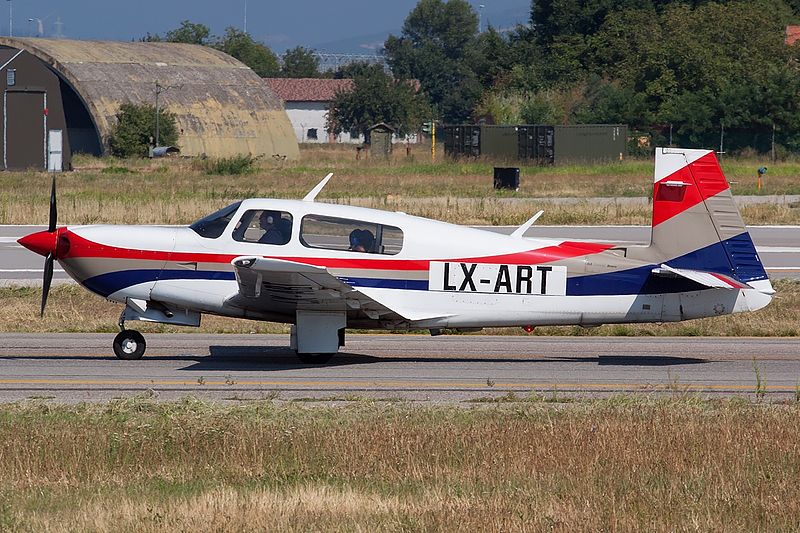
Also Consider
Cessna 400 (2004 - 2010).
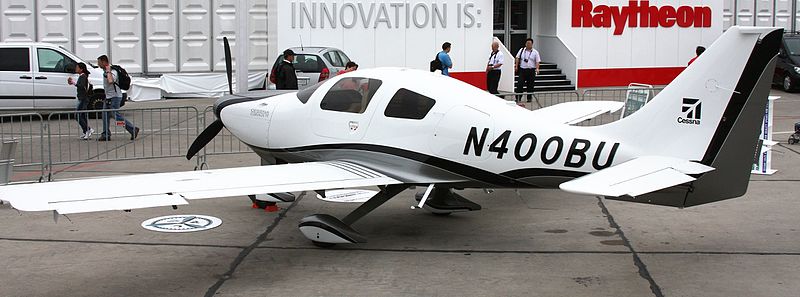
Typical Price: $374,527.00 Total Cost of Ownership: $33,041.17 Best Cruise: 220 KIAS ( 3 ) Best Range: 829 NM ( 193 ) Fuelburn: 16.0 GPH ( 2.0 )
Adjust ownership costs parameters
- Cost Per Mile
- Cost Per Hour
Leave Us Feedback PlanePhD is only as good as its community. Everyone wins if you share.
Please tell us: - Features that would be useful to you. - Aircraft data that you believe is inaccurate or have specific experiences. - Aircraft specific reviews and articles. Please send us your experiences on your aircraft. - Send us pictures of your plane. - Use this form or email to reach out to us: [email protected]
Thank you for contacting us!
One of our Planephd Experts will be in touch with you shortly.

- Brands/Models
- Buyer’s Guide
- Glass Cockpits
- Auto-Pilots
- Legacy Instruments
- Instruments
- Safety Systems
- Portable Electronics
- Modifications
- Maintenance
- Partnerships
- Pilot Courses
- Plane & Pilot 2024 Photo Contest
- Past Contests
- Aviation Education Training
- Proficiency
- Free Newsletter
MOONEY M20 “PFM, MSE, TLS, EAGLE, ENCORE, OVATION, BRAVO”
By Plane and Pilot Updated January 28, 2016 Save Article
STANDARD DATA: (Ovation) Seats 4. Gross wt. 3,368. Empty wt. 2,205. Fuel capacity 89. Engine 280-hp Continental IO-550-G. PERFORMANCE: Cruise Speed 190 KTAS. Stall 59 kts. Initial climb rate 1,250. Ceiling 20,000. Range 1,240. Takeoff distance (50′) 2,060. Landing distance (50′) 2,280.
In 1988-89 Mooney offered the PFM (M20L), a regular M20 airframe with a Porsche engine up front. It was a first in many ways, primarily because it offered a high performance automobile manufacturer’s variant for an aircraft, and second, the PFM was the first airplane to have a single-engine power control, the precursor to what is now called FADEC (Fully Automated Digital Electronic Control). Porsche placed limits on their liability exposure by setting a finite availability for the PFM Mooney engine, all of which were eventually removed from their M20 airframes and returned to Porsche.
Also in 1989, Mooney addressed a common complaint about comfort in the M20 airframe, and extended the fuselage by 18 inches. The first model to take advantage of the new dimensions was the M20M TLS. With a 350-hp Lycoming, derated 270 hp, the TLS turned in an effortless 223-knot high-speed high-altitude cruise speed. The aircraft would ultimately be renamed the Mooney Bravo.
After testing a model-name change to Mooney 205, the venerable Mooney 201 was christened the MSE (Mooney Special Edition M20J) in 1990. That name would continue until 1998 when the 200-hp M20 was laid to rest in favor of more powerful newcomers.
Beginning in the mid-1990s Mooney began to search for a replacement for the 201, arriving first at the Ovation (M20R), with a 280-hp Continental. In 1997, Mooney searched for a lower-costing, entry level design, offering the 220-hp Encore (M20K). In 1999 they tried again with the 244-hp Eagle (M20S). Neither the Encore nor the Eagle remain in production, however the M20 airframe will doubtlessly continue to evolve for years to come.
Related Stories
Boeing 737 200–900.

What‘s Going On with Cessna Denali Turboprop?

Daher TBM 940 Achieves Milestone
Stay in touch with Plane & Pilot
America’s owner-flown aircraft enthusiasts and active-pilot resource, delivered to your inbox!
Save Your Favorites

Already have an account? Sign in
Save This Article
- General Mooney Talk

- Remember me Not recommended on shared computers
Forgot your password?
M20J cruise settings

By larrynimmo January 11, 2021 in General Mooney Talk
- Reply to this topic
- Start new topic
Recommended Posts
I am curious what settings others use for cruise...lately I’ve been using 2,450/24 square either 75rop getting close to 145k avg ground speed@ 11gph....or 25 lop getting 130k @7.4gph
these are at 2,000’ 45f
Link to comment
Share on other sites.

Cruise at 2k’ Larry? (Just checking)
I have fear of C152s...
Best regards,

Just now, carusoam said: Cruise at 2k’ Larry? I have fear of C152s... Best regards, -a-
Most of my flights are under 50 nautical miles away...and some are in restrictive airspace.
when I fly greater distances then I do between 6k and 9k depending on winds
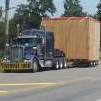
I only ever use 2500rpm for cruise. If it's a normal cross country flight, it's always 2500+WOT. Simple as it gets.

I'm usually at 8k-10k feet, always wot/2500, usually 100 ROP. Gives a reliable 150 kts at about ~10.2 gph.
Full throttle. 2500 rpm. 15-30 LOP
Down low (2000 - 3000 MSL): 24 " and 2500 rpm. Fuel flow 9.5 gph about 20 F LOP
Higher (above 6000 MSL): WOT, 2500 rpm, peak EGT (compromise between range and speed).
I use 2500 rpm because Bob Kromer said that this was the most efficient speed for the McCauley prop. I don't have a map for the prop so I can't verify, but I figure Bob should know.
With a M20J, I have a little Lycoming 4-banger which is pretty efficient compared to a big bore Continental. So I figured I already pre-saved on fuel. I bought the Mooney to get places fast and efficiently and peak EGT seems a good tradeoff.

Full throttle, 2500rpm, if
36 minutes ago, PT20J said: I use 2500 rpm because Bob Kromer said that this was the most efficient speed for the McCauley prop. I don't have a map for the prop so I can't verify, but I figure Bob should know.
Pretty much everything I do with power settings is from MAPA guidance.
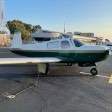
I've been flying WOT/2550 RPM. Typically cruising between 6500-9500'. Sometimes overflying the Class B at 11500'. Being reminded of Bob Kromer's advice upthread, I might try using 2500 RPM again, as I did for the first 25 hours.
Anyway, after using lean find and getting the same numbers enough times I simply lean to 12.0 GPH, which is 100º ROP, and that reliably delivers 155-160 KTAS according to the G5. I've also used 10.5 GPH for "economy" cruise, which yielded about 145-150 KTAS if memory serves. Much like @PT20J said, I like going fast.

ArtVandelay
I'm usually at 8k-10k feet, always wot/2500, usually 100 ROP. Gives a reliable 150 kts at about ~10.2 gph.

13 hours ago, PT20J said: Down low (2000 - 3000 MSL): 24 " and 2500 rpm. Fuel flow 9.5 gph about 20 F LOP Higher (above 6000 MSL): WOT, 2500 rpm, peak EGT (compromise between range and speed). I use 2500 rpm because Bob Kromer said that this was the most efficient speed for the McCauley prop. I don't have a map for the prop so I can't verify, but I figure Bob should know. With a M20J, I have a little Lycoming 4-banger which is pretty efficient compared to a big bore Continental. So I figured I already pre-saved on fuel. I bought the Mooney to get places fast and efficiently and peak EGT seems a good tradeoff. Skip
I’ve used peak egt as well but usually up higher. When you use it at ~6500’, what kind of CHT are you ending up with? Are you leaning until all 4 are peaked and just leaving the richest one at peak so the others are slightly lop?
I’d like to try that myself but don’t want to end up having a cylinder 25 rop or real hot.
I'm glad to see this thread. I am a relatively new Mooney pilot, had my '95 M20J for a year now and every single time I cruise I look at the cruise power chart on the sun visor and just dial in the power configuration % I want, usually 65%, with the lowest RPM listed for the altitude, and lean for best economy, as long as CHT stays down. If CHTs rise, I try to enrichen first before opening the cowl flaps.
I don't have go-to settings.
It seems like there are a lot of ways to go about this.
7 hours ago, ArtVandelay said: Same except I run LOP, so save ~1.5 gph.
I used to run LOP, but my plug fouling problems went away when I stopped, so I haven't gone back to it. It does seem happier ROP.
44 minutes ago, EricJ said: I used to run LOP, but my plug fouling problems went away when I stopped, so I haven't gone back to it. It does seem happier ROP.
Was it running really cold CHTs lop?
1 minute ago, Ragsf15e said: Was it running really cold CHTs lop?
Cold enough, apparently. I think that was ultimately the issue, which isn't a problem ROP.
1 hour ago, Derek said: I'm glad to see this thread. I am a relatively new Mooney pilot, had my '95 M20J for a year now and every single time I cruise I look at the cruise power chart on the sun visor and just dial in the power configuration % I want, usually 65%, with the lowest RPM listed for the altitude, and lean for best economy, as long as CHT stays down. If CHTs rise, I try to enrichen first before opening the cowl flaps. I don't have go-to settings. It seems like there are a lot of ways to go about this.
If you have a good engine monitor with cht and egt for all cylinders as well as fuel flow, you can do better than the standard settings. It all depends on what you’re looking for-speed, efficiency, noise reduction, low fuel flow (loiter), etc. Additionally, you can keep your engine happy and healthy by keeping appropriate cylinder temps and your plugs lead free by proper leaning (usually on the ground).
Step one is having an engine monitor though. Do you have one?
2 hours ago, Ragsf15e said: I’ve used peak egt as well but usually up higher. When you use it at ~6500’, what kind of CHT are you ending up with? Are you leaning until all 4 are peaked and just leaving the richest one at peak so the others are slightly lop? I’d like to try that myself but don’t want to end up having a cylinder 25 rop or real hot.
I'm not @PT20J , but we both have MSEs and it sounds like I fly somewhat similarly so I'll add some data. Using the settings I mentioned above, my CHTs in cruise with cowl flaps closed are usually about 355. One is always a little cooler than the other three, around 335-350. I try to keep them above 350º based on the final paragraph in this Mike Busch article . I wasn't flying during the summer, but so far I've found it just about impossible to get them any higher than 370 no matter what I do.
ADDING: The only flights I had during summer were ferrying the plane home after purchase. Found a few photos of the engine monitor from those flights: 354/354/361/353 (at 10.7 GPH), and another flight at 356/358/368/359 (at 10.5 GPH). So it seems the same will be true next summer.
Just now, EricJ said: Cold enough, apparently. I think that was ultimately the issue, which isn't a problem ROP.
Yeah, mine will get pretty cold as well lop. Especially at higher altitude, lower rpm and cold OAT. My Surefly actually helped that a little and it stays in the 330f range lop now.
5 minutes ago, Ragsf15e said: Step one is having an engine monitor though. Do you have one?
Not yet. Was waiting to get through 2 annuals. That's done now so I have confidence in the engine and airframe.
Next stop: avionics shop.
35 minutes ago, Derek said: Not yet. Was waiting to get through 2 annuals. That's done now so I have confidence in the engine and airframe. Next stop: avionics shop.
An engine monitor is not Avionics. Any A&P can do that installation... at a lower hourly rate than the avionics shop.
8 minutes ago, gsxrpilot said: An engine monitor is not Avionics. Any A&P can do that installation... at a lower hourly rate than the avionics shop.
I think that depends on the installation and the A&p. Once they’re cutting out panel space and connecting to avionics (gps and audio alerts) some A&Ps will defer to an avionics shop. For a simple, straightforward monitor I agree with you though. Maybe cgr-30p?
2500 rpm, wide open throttle, manage the cowl flaps and fuel flow (usually see 11.5 gph) for cht’s near and below 380 yields 155-160 ktas for me. 7-9k altitudes. 1980 M20J.
When ambient OAT is really hot, ~70F+ and I’m at 5-7k I’ll run at 2400 rpm and usually see 155 ktas.
23in/2400 rpm ... 9gal/hr
nice and quiet
Join the conversation
You can post now and register later. If you have an account, sign in now to post with your account.

× Pasted as rich text. Paste as plain text instead
Only 75 emoji are allowed.
× Your link has been automatically embedded. Display as a link instead
× Your previous content has been restored. Clear editor
× You cannot paste images directly. Upload or insert images from URL.
- Insert image from URL
- Submit Reply
Members Online
- 00-Negative
- Mooney-Shiner
- Existing user? Sign In
- Online Users
- All Activity
- My Activity Streams
- Unread Content
- Content I Started
- Leaderboard
- Create New...
Important Information
We have placed cookies on your device to help make this website better. You can adjust your cookie settings , otherwise we'll assume you're okay to continue.
Mooney M20 Acclaim Ultra - Price, Speed, Fuel Burn & Specs

March 8, 2023
This article may contain affiliate links where we earn a commission from qualifying purchases.
Key Takeaways
- The Mooney M20 Acclaim Ultra is a four seat, general aviation aircraft, and the most recent member of the Mooney M20 family to roll off the production line.
- Still in production, a brand new Mooney M20 Acclaim Ultra costs between $760,000 and $900,000 depending on the options chosen
- By contrast, a used Acclaim Ultra costs between $700,000 and $800,000 depending on age, condition and other factors
- The Mooney M20 Acclaim Ultra has a top speed of 242 knots, a cruise speed of 175 knots and has a maximum range of 1275 nmi
- Its single Continental TSIO-550-G engine burns approximately 18 gph on average
The Mooney M20V Acclaim Ultra is the fastest single-engine four-seater plane on the planet. This guide looks at its features for prospective buyers.
The Acclaim Ultra rolled out in 2016 and currently costs between $780,000 and $900,000 new or $700,000 to $800,000 used. It has a max speed of 242 kn, a cruise speed of 175 kn and a maximum range of 1275 nmi. It is powered by a single Continental TSIO-550-G that burns 18 gallons of fuel per hour.
As an experienced flight instructor who teaches in single and multi-engine airplanes and a corporate pilot, I frequently fly various members of the Mooney M20 family, including the Acclaim Ultra,in addition to other GA and corporate aircraft.

Table of contents
mooney m20 acclaim ultra background.
It is easy to mistake the fastest single-engine four-seater Mooney M20 Acclaim Ultra as just the latest iteration of the M20 line that began in 1960. But it's not. Mooney Aircraft, the manufacturer of the Acclaim Ultra, changed enough of the structural design and the production process that it had to undergo recertification with the FAA.
The Acclaim Ultra, which rolled out in 2016 and remains in production, has been redesigned to be aerodynamically refined, structurally robust, and ergonomically superior. The changes resulted in production cost savings, reduced weight, and better performance.
The final result is a plane that is quicker to build and flies further faster while carrying more.
Based on the long body airframe of the M20 lineage, the Acclaim Ultra uses a welded steel tube cage combined with a semi-monocoque rear fuselage to deliver added strength and reduced weight. Aside from aerodynamic considerations that drive the new design, ergonomics of egress and ingress changed how structural designers reimagined the fuselage and cabin.
With two doors now, one for each front-row occupant, the steel tubing in the previous fuselage had to be redesigned to transfer stresses and force distribution around the brand new second door. The significantly larger doors meant that the force-carrying members of the fuselage had to be repositioned and strengthened to handle the torsion and bending moments of the airplane that is meant to go faster and carry more.
The steel structure is covered with a single-piece composite shell that was clipped to it, resulting in a smooth, aerodynamic outer layer that allows the Mooney to slip through the air with a lower drag coefficient. This is further enhanced by the practice of flush riveting in areas where they still use sheet aluminum.
The result of the new doors and the extra rear windows, combined with the new version of previously-popular paint schemes, resurrected the race-bred aesthetics of Mooney’s heyday. But all the structural and aerodynamic changes do affect how the plane feels in your hands.
The Mooney M20V Acclaim Ultra is fast, no doubt, but it's also not as agile as its predecessors. To keep the CG within range, the engine was hung a little farther forward, changing the feel of the airplane, especially noticeable when pulling back the yoke on rotation. Compared to the older M20 variations, the M20V Acclaim Ultra needs a positive yank to unstick it from the ground.
This is by no means a bad thing. The older Mooney’s tended to leap into the air before they were fully ready. That didn’t matter so much on cold days, but on high-density-altitude days, it used to be a problem. Setting the trim for take-off helps considerably.
Roll sensitivity remains solid. With enough practice, course corrections just require you to think it for the plane to bank one way or the other. That’s how sensitive they can be. And up at altitude doing 240 knots, that’s how you want it if you are hand-flying the speedster. Don’t be ham-fisted with this plane.
Pitching up for a 120-knot cruise climb can get the deck angle pretty high, but it will result in an over-1000 fpm climb rate. It is possible to get up to 1,800 fpm depending on how cold it is outside and how light you are.
Even being one of the heavier of the variants, the M20V still manages to be the fastest, and that’s because of its streamlined lines and clean surfaces. You have to fly this aircraft by the numbers, otherwise, it will get ahead of you.
What most forget is that they have two things working against them on the way down. Unlike a normally aspirated piston engine that is aerodynamically dirty, the Acclaim Ultra takes a long time to bleed off its speed. That’s made worse on the descent phase of the flight. The first problem is that you can’t just pull the power back to idle. It will shock cool the turbos and the engine.
The second problem, as with all M20 variants, the Acclaim Ultra is as slippery, if not more so, than other Mooneys. This is where the speed brakes come in handy. They have no limitations and you can deploy them at any time, even with your cruise power still engaged. Just don't engage them too close to the ground if you haven't already stabilized the plane.
A good practice for the descent is to pull back the MAP by an inch and let the nose drop at the top-of-descent, then deploy the speed brakes. Keep reducing the throttle by an inch every thousand feet and the temperature will drop gently. The speed brakes that come with the Ultra are a good way to save your engine and bleed the excess energy to set yourself up for a stable final approach.
The larger cabin now features increased leg and shoulder room for all four passengers while converting the once-steam gauge-driven dash into a glass cockpit with full avionics and coupled autopilot.
The Mooney M20V, like its predecessors, is not pressurized but has the capacity to effortlessly climb to its ceiling of 25,000 feet. This is because of Continental’s turbo-supercharged engine that delivers 280 horsepower for much of the climb phase.
Both the M20V and the M20U Ovation Ultra that was released at the same time have had a somewhat tumultuous production history. First put into production in 2017, production of the types ceased in 2019 due the company having financial troubles, though production restarted before the year was over. Since then, Mooney has struggled to gain new orders of both types, even if deliveries continue to be made to willing customers.
What Are The Specifications of Mooney M20 Acclaim Ultra?
How much does the mooney m20 acclaim ultra cost.
There are three price categories for the Mooney M20V Acclaim Ultra. The first two are ascribed to brand-new airplanes, priced by the factory. The low end of the price range is $760,000. For this price, you still get the full glass cockpit and the autopilot.
The upper end of the price range gets you the factory's full spec version which runs close to $900,000. This includes factory air conditioning, long-range tanks, long-range oxygen systems that will allow you to stay up at 12,500 feet or higher for longer, and de-ice systems that will get you FIKI-certified.
The de-icing system that does raise the factory price considerably allows you to fly up to three hours in known icing conditions. Its unique design, not following the typical bleed air heating or the inflatable boots, glycol that is pumped out to the prop, the wings, and the empennage through tiny holes and spread across the surface. This prevents ice from forming.
The third price category is for a used Mooney M20 Acclaim Ultra. It’s not always easy to find between $700,000 and $850,000. There are two reasons for the high price in the secondary market. The first is that there just aren't many of them on the market, but that could change as the lower serial numbers begin to show up in the secondary market as their tenth anniversary rolls around.
Operating Cost
To calculate the costs to operate the Mooney M20V Acclaim Ultra, we will assume that the average fuel burn is 18 gallons per hour and that the price of 100LL is $6.50.
Direct operating Costs, DOC, for the Acclaim Ultra include hourly fuel and oil burn. Hourly fuel costs are (18 GPH x $6.50) $117.00 per hour.
Most Acclaim owners reckon that they burn oil at a rate of about a quart every five hours. At $10 per quart, the hourly cost for oil is $2.
Consider oil changes every 25 hours to keep your engine in good shape. With an 8-quart sump, a new oil filter at each oil change, and workmanship, it will cost $250 every 25 hours, or $25 per hour.
With these three items, the Mooney M20V Acclaim Ultra’s Direct Operating Cost is $144.00 per hour.
In addition to DOCs, you will also have fixed costs that accrue regardless of the number of hours of flight time you place on the aircraft.
The largest fixed cost item you will face is the insurance premium. Assuming you purchase the Acclaim for $900,000 and you are a qualified pilot, as far as the insurers are concerned, then your premium for hull and liability will be $22,500. It could go up as high as $30,000 if you are less than fully qualified.
Assuming you flew the Acclaim Ultra 500 hours a year, your insurance cost breaks down to $54 per hour.
Hangaring the airplane will add another $7200 for a typical T-hangar or maybe a shared spot in the main hangar on your field. That adds up to $14.4 per hour.
In addition to the direct and fixed costs that you will incur when you own the Acclaim Ultra, you will also have to create a kitty for the maintenance and work that will have to be conducted over the course of usage.
The biggest line item to think about is the engine. The engine on the Acclaim Ultra has a recommended TBO of 2,200 hours. Across a wide range of aircraft owners, the Continental TSIO-550-G costs $48,000 to overhaul and $68,000 to replace.
The first two TBOs can expect a simple overhaul while you should expect to replace the engine at the third. That’s a horizon of 6.600 hours that will see two overhauls and one new engine. This will result in a total cost of $164,000 over 6600 hours of use. That’s $25 per hour.
The prop will also need to be overhauled every two years or 2,000 hours. The Hartzell scimitar prop costs $9,000 for a brand new one, and $3,000 to overhaul. Assume having to change out a new prop every 4,000 hours while overhauling it every 2000 hours. As such, over 4,000 hours you will purchase one new prop and overhaul it once.
However, since you will fly only 500 hours a year, while the prop needs to be overhauled once every two years, you would have only flown 1000 hours before timing out. As such, figure overhauling the prop three times and replacing it once every four years. This costs a total of $18,000 for 2,000 hours or $9 per hour.
Whether you rent the aircraft out, you should consider getting a mechanic to do a 100-hour inspection as well. It will be a good time to have the oil changed and look around and take care of anything that comes up.
A typical hundred-hour for a Mooney M20V Acclaim Ultra will cost $600, including the oil change. That’s $6 per hour.
While we are talking about maintenance, set aside $1,500 for unscheduled maintenance every year. That’s $3 per hour.
To keep the aircraft airworthy, Annual Inspections are required and it has to be signed off by an IA. Annual Inspections which will include any Service Bulletins or Airworthiness Directives can cost up to $2500 a year. That’s $5 per hour.
Also, put aside $500 for subscriptions and charts. That’s $1 per hour.
Consider painting your airplane once every five years. This is approximately $15,000 and works out to be $10 per hour of flight time.
In total, your hourly cost to operate the Mooney M20V Acclaim Ultra is $271.40 (this includes DOC, Fixed Costs, and maintenance reserves.)
How Fast is The Mooney M20 Acclaim Ultra?
The Mooney M20V Acclaim Ultra is the fastest plane in the Mooney lineup, and the fastest piston engine aircraft on the planet flying at a max speed of an impressive 242 knots and a cruise speed of an impressive 175 knots. The Mooney relies on its powerful Continental TSIO-550-G engine to develop the most power it can while using the three-bladed scimitar prop to convert much of the 280 horsepower to thrust.
In slower single-engine airplanes that use the same six-cylinder engine, much of the speed loss results from the poor conversion of power to thrust that uses a two-bladed conventional prop. This is in addition to the aerodynamic efficiencies that have already been mentioned.
The power of the twin-turbo with double intercoolers provides 35 inches of manifold pressure at sea level when the throttles are fully advanced, so be careful not to over-boost. There are no wastegates on the Mooney so you could damage the internals if you make it a habit of over-boosting.
Instead, advance the RPM to full forward, hold the brakes, and advance the throttle to 30.5 inches of MAP before releasing the brakes for the take-off roll. When it gets to FL250, it can still maintain 30.5 inches of manifold pressure, allowing for its max speed of 242 knots or cruise speed of 175 knots in standard conditions.
For the climb segment, with the power at 30.5 inches and the RPM at 2500, the Acclaim Ultra will climb at 1200 fpm if you pitch for 120 knots. With that kind of performance, it is hard to think of the Mooney M20V Acclaim Ultra in the same way you think of most GA aircraft.
It takes about 10 minutes to get to 12,000 feet and, with a fuel flow of 22 gallons per hour, achieve 210 knots (true). If you just want to go fast and are not willing to go through the trouble of hooking up the oxygen, then you can still tap into the speed, but you will have to accept the high fuel burn at lower altitudes. For economy and speed, the Mooney demands that you fly it at FL250.
At the ceiling, you can bring the fuel flow back to 15 gallons per hour at 50 degrees lean of peak and still get 218 knots. You can take it up to 240 knots at FL250 if you set it to 2500 RPM and 30 inches MAP and lean it out to 18 gph.
How Much Fuel Does The Mooney M20 Acclaim Ultra Burn?
The M20V Acclaim Ultra comes with tanks that you can top off to 100 gallons. There are long-range tanks that you can opt for that will extend the legs of an already respectable maximum range of 1,200-plus nautical miles.
However, the Acclaim Ultra is already a little thin as far as being able to load all of its four plush leather seats. With full fuel taking up 600 pounds from its 3,280-lb MTOW, that leaves 2,680 pounds of aircraft, passengers, and baggage.
The Mooney Acclaim Ultra weighs 2,225 empty. It’s a little heavy compared to its predecessors due to its factory air, the de-ice tanks, the added steel tubing to accommodate the pilot’s-side door, and so on. As such, what’s left is just 435 pounds that you can use for people and bags. This is not enough to take four people on a twelve-hundred-mile trip.
With two average-size adults, weighing a total of 380 pounds, that gives you 55 pounds for luggage if you decide to carry full fuel.
With 100 gallons of fuel, only 92 gallons are usable. This is where the Mooney’s high ceiling comes in handy. The take-off and climb phase that gets you to 12,000 feet has a typical fuel burn of 12 gallons. For this, you will have to be running the mixture at full rich with manifold pressure at 30.5 inches and RPMs at 2500. When you level off at 12,000 feet, setting the MAP to 30.5 inches, you will get a fuel burn of 22 GPH.
Figure that the descent and landing phase will take up about 8 gallons of fuel. That’s 20 gallons out of 92. Assume also that 16 gallons will be your IFR reserve, and that’s what you should have, at the very least, when you land. That leaves you with 54 gallons of fuel for your en route phase. Flying at 12,000 feet and burning 22 gallons per hour giving you 2.45 hours of endurance with IFR reserves.
At 210 knots (true) you will only be able to get 515 nautical miles, assuming still air conditions.
The endurance and maximum range picture is significantly different, however, if you fly the Acclaim Ultra at FL250. It gets you to 241 knots for the same payload while the fuel burn can be leaned back to 18 GPH.
Taking into account the extra 6 gallons it would take to get you to FL250 and the slightly longer descent time on the back end, you would have 50 gallons for cruise, giving you an endurance of 2.8 hours at a fuel burn of 18 GPH. This will result in about 588 nautical miles in still conditions.

When Do Doors Close On An Airplane Before Flight?

What Is A Very Light Jet?

Does Cessna Make Jets?

How Much Does A Plane Cost?
About THE AUTHOR
Joe Haygood
Obsessed with Planes and Flying
Trending Now

How High Can A Piper Fly?

The Best Small Planes You Can Buy Right Now

How Much Does A Boeing Plane Cost?

How Much Does It Really Cost To Paint A Plane?
Learn all about planes and pilots, and even how to fly, with SkyTough. We'll explore the ins and outs of the sky and how to travel through it. Read more about us, here .

©2024 SkyTough. All rights reserved.
We can be reached at [email protected]
SkyTough.com is a participant in the Amazon Services LLC Associates Program, an affiliate advertising program designed to provide a means for sites to earn advertising fees by advertising and linking to Amazon. This site also participates in other affiliate programs including but not limited to ShareASale, CJ, and ClickBank, and is compensated for referring traffic and business to these companies.

Mooney M20j Guide and Specs: Pricing and Reviews
Table of Contents
Introduction
The Mooney M20J is a special aircraft. The American lowrider follows the adage of “if it looks good, it flies good”, and has a well-deserved reputation as a showstopper wherever it makes a stop at.
The Mooney M20 family is instantly recognizable thanks to its unique forward-swept vertical stabilizer. Pilots familiar with it praise the aircraft for being like a sports car, and those of cross-country disposition are especially fond of its reliable equipment and high speeds.
The Mooney M20’s name comes from being the 20 th project by self-taught American aircraft designer Albert W. Mooney. It was introduced in 1955 with the wooden wing Mooney M20 and M20A, but received continuous upgrades, refinements and redesigns up until the end of its long production run in 2019.
Barely two decades into its production, Mooney introduced the M20J in 1976. This variant was the result of a long improvement program aimed at bringing greater top speeds into the family. During its production run, the Mooney M20J was also called “Mooney 201” by the company, because it could fly at 201 miles per hour.
Mooney M20J / Specs
The Mooney M20J shares many design aspects with its other M20 family members. The aircraft has a fully metallic construction. The forward fuselage is a steel-tube structure covered in aluminum skin, while the rear portion is a semi-monocoque design.
In keeping with the goal to make a sleek aircraft, many of the aircraft’s rivets are flush mounted to reduce drag. The Mooney M20J variant belongs in the medium-body series of the M20 family and seats up to four people. The M20J has a maximum takeoff weight of 2740 lbs.
A staple of Mooney M20 variants including the M20J is the retractable landing gear , made of chrome-molybdenum steel. The main landing gear legs are attached to the main wing spar while the nose gear is mounted onto the steel frame in the forward part of the fuselage. The aircraft uses rubber disc shock absorbers.
The Mooney M20J uses a conventional electrically operated landing gear handle, as opposed to earlier variants that required a hand-cranked lever inspired by the Johnson Bar found in locomotives, Al Mooney’s previous area of expertise.
The low-mounted wing covered in aluminum, with 1.5 degrees of washout and 5.5 degrees of dihedral. A total of 70% of their trailing edge is comprised by slotted flaps. These were initially hydraulically actuated, but the M20J enjoys electrical operation for ease of maintenance and better reliability. The wings are fitted with stall strips to improve behavior at the edge of the envelope.
It is always easy to spot a Mooney on the ramp: the M20 has a unique forward-swept vertical stabilizer. This impression is mostly limited to it on the ground though, in flight under most trim settings the fin sits at an almost vertical position.
The Money M20J stores its fuel in two separate tanks located at the inboard section of each wing. Fuel is transferred from the wing tanks to the injector via a pump powered by the engine, with an electric boost pump available.
Propulsion on the M20J is provided by a Lycoming IO-360 four-cylinder injected engine with 200 hp. This engine runs at 2700 RPM and has a minimum fuel grade of 100 or 100LL avgas. Its compression ratio is of 8.7:1. The engine has Bendix Series impulse coupling dual magnetos and is an evolution of the IO-360-A1B6D, itself an improvement of the IO-360-A1B6 engine.
Check out our guide on the 15 Most Important Events in Air History Of All Time here.
Mooney M20J / Model Prices
At the time of its introduction in 1976, a Mooney M20J would cost around $44000 from the factory. Prices gradually rose into the 1980s, thanks in part to Mooney adding factory-based flight training programs so new owners could take the aircraft home while being familiar with its quirks.
Towards the end of the Mooney M20J production, a new aircraft plus the training program would set the owner back $120000.
Mooney M20J / Performance and Handling
The official performance specs published by the Mooney Aircraft Pilots Association lists a cruise speed of 160 KTAS, which yields a fuel burn of 11.5 gallons per hour (gph).
Pilot experience says you can bring that down to 9 gph and still get 135 KTAS, and if you are particular about fuel, setting the engine to 55% power gives a consumption as low as 8 gph. With full fuel, or 64 useable gallons, the Mooney M20J can give around 700 miles at 155 to 160 knots.
Most pilots familiar with the Mooney M20J were likely working on their commercial rating at one point or another. For many years, one of the requirements to obtain a commercial rating was that the training be conducted on retractable gear aircraft .
This eliminated plenty of competitors to the Mooney, but it did not earn its spot as the commercial training darling without merit. Additional comfort on long trips is given by the two-axis autopilot installed as standard equipment on the Mooney M20J.
The M20J’s blend of a 200 hp engine and retractable landing gear gives it great performance without skyrocketing the costs. Due to the amount of cross-country flying involved on a commercial rating, this offered pilots an aircraft that can get the job done in a timely manner and without breaking the bank – a very important requirement for aspiring professionals yet to get their first aviation paycheck.
As with many aircraft that deliver in performance, the Mooney M20J has certain vices one must be aware of. Pilots usually describe it as an aircraft that needs to be flown strictly by the numbers. As speed decreases, the M20J’s stall margin decreases significantly if the pilot does not fly coordinated.
Unlike most high-wing Cessna aircraft, recovery requires finer footwork – when noticing a wing drop, the pilot must give the rudder pedals a gentle tap in the opposite direction to straighten it out.
On the flip side, thanks to its clean airframe and powerful engine, the Mooney speeds up rather fast, so one does not have to worry about being on the edge of stalling for too long.
Compounding the tight stall margins is the excellent pitch authority in the Mooney M20J – some love it, others argue it to be overly sensitive. Pilots should be careful to not go chasing the vertical velocity indicator (VVI) needle due to that as it becomes a ticket straight to pilot-induced oscillations (PIO).
On top of that, trim actuation works differently on the Mooney. While the trim wheel on most Cessna or Piper aircraft controls the trim tab at the end of the elevator, on the M20J it moves the entire horizontal stabilizer. This requires a very measured approach to the trim wheel, particularly during slow speed situations like takeoffs or landings.
Extra care is required during the landing phase – if the pilot trimmed for full nose up, decides to go around, and gives it full power, it is possible to not have enough nose-down authority unless the wheel is moved accordingly.
Another quirk of the Mooney M20J that catches many unfamiliar pilots in the beginning lies in the descents. Thanks to the sleek airframe, even with the engine on idle the M20J is a hoarder as far as speed goes.
This means descending requires more room and prior planning than in most aircraft in its class. Owners and instructors with more time behind this magnificent machine have found workarounds though.
The Mooney M20J’s landing gear has generous airspeed restrictions, so pilots who want a tight descent often level out, get to the maximum extension speed, put the handle down, and then shed speed as planned on the way down.
When getting down immediately is imperative, it is also possible to decelerate further until the flap extension limits, which brings about a considerable increase in drag and aids in expediting a landing.
Mooney M20J / Model Maintenance Schedule
As a general aviation aircraft using a Lycoming engine, the Mooney M20J lives a peaceful life as far as maintenance goes. The IO-360 is part of the O-360 family that powers many aircraft including the very popular reboots of the Cessna 172 Skyhawk series, reintroduced in 1996 after a break in production.
The popularity of the engine means finding qualified personnel and parts for it is a piece of cake compared to discontinued units or ‘unicorns’ fitted to a single type.
One design feature that makes the M20J score below its competitors is the landing gear. Opting for a retractable landing gear allowed Mooney to create a hot rod aircraft without having to pick an engine that would sacrifice fuel efficiency beyond reason, but as the rule goes in aviation, the more moving parts you add, the more complexity, and the more complexity, the higher the costs. For that reason, annuals on the M20J end up being costlier than those on a 172, for example.
Mooney M20J / Modifications and Upgrades
Like most general aviation aircraft, the Mooney M20J has been target of numerous supplemental type certificate (STC) modifications that upgrade its avionics suite. The most popular options by far involve outfitting the instrument panel with a GPS navigation unit like Garmin’s GNS 430.
The Mooney M20J has also seen a considerable amount of modifications aimed at improving performance, with cruise speed making up the lion’s share of the target.
Examples of Mooney modifications include Power Flow Exhaust Systems that add 3 to 4 knots, Gami injectors that allow for operations closer to the RPM redline at lower altitudes without overheating the engine, and a Lopresti cowling that adds around 5 knots.
Mooney M20J / Where to Find Replacement Parts
Due to the aircraft’s popularity and the use of one of the most widespread engines in general aviation, sourcing parts for the Mooney M20J is generally described as a pleasant affair.
The manufacturer has held up on its promise to support the M20 family after its production ceased in 2019, and it has done so at owner-friendly prices. While not nearly as common as some of Cessna’s high wing designs, it is not hard to find maintenance personnel with Mooney experience.
Mooney M20J / Model Common Problems
One of the most common complaints from pilots about the Mooney M20J is not a design flaw per se, but an inherent challenge brought about by its performance. By general aviation standards, the M20J is a rather fast aircraft. In practical terms, the faster you fly, the faster things happen, and this significantly tightens the OODA (Observe, Orient, Design, Act) loop in the cockpit.
The consequences of a faster decision-making cycle can be wide-ranging. It can make a pilot accidentally stray into airspace they should not fly in or forget to adjust trim when going around and losing control in the process.
Most Mooney M20J owners have reported that the fuel tanks inevitably require resealing at some point during ownership. This is an expensive repair for the most part, and many that tried to save up on the procedure by picking the lowest bidder shop ended up having to repeat the procedure later with a more experienced team.
The windows have been reported to leak over time. Water entering the cabin insulation can corrode the internal steel tube cage. Depending on the extent of the damage, it may require deep and expensive work. The main wing spar is prone to corrosion issues in aircraft stored in coastal areas.
Other minor grievances of Mooney owners are landing lights that burn out easily, frequent issues and subsequent airworthiness directives (Ads) related to the Bendix magnetos, and a tight engine compartment that makes maintenance and inspections a frustrating affair.
Mooney M20J / Insurance Options
Assuming a pilot with a private pilot’s license, an instrument rating, 500 hours in total plus at least 50 of retractable gear including 50 in the Mooney M20J, it is possible to get liability and hull coverage for $1562 to $2400 annually, according to BWIFLY.
In the case of a less experienced pilot, such as a student, the prices increase considerably. A private pilot with less than 50 hours on the make or a student for example will be looking at between $4100 and $5600 per year for the same coverage.
Mooney M20J / Model Resale Value
Prices for the Mooney M20J considerably vary, with the equipment and year of manufacture being the most influential factors. However, it is a known as an affordable aircraft overall.
According to AOPA, the average price for a Mooney M20J built around 1980 hovers around $85000 to $100000. For the younger units built after 1990, costs can reach up to $200000 if the aircraft is in good shape.
Mooney M20J / Owner Reviews
Those who have had the Mooney M20J experience say it is hard to imagine life without one. The M20J delivers brilliant cross-country speeds at rather low costs, and all that while looking good. Rather simple maintenance requirements also weigh in heavily, as owners and rental pilots alike describe it as an aircraft always ready to go wherever you want, whenever you need it.
The equipment shipped with the M20J by default helps establish its reputation as the leading IFR and commercial trainer in its class. The IFR-rated cockpit combined with the two-axis autopilot means aspiring commercial pilots can learn the ropes in comfort and in style.
Mooney M20J / Similar Aircraft
Throughout its life, the Mooney M20 family has had a fierce rivalry with another retractable-gear aircraft with a unique tail: the Beechcraft Bonanza . The enmity transcends sales and has been passed down to owners, who can often be heard having heated discussions about who does what best at FBOs around the world.
The Mooney and the Bonanza sit at the top of the high-performance, single-engine bracket. Similarities mostly end there, however. The Mooney is popular for providing high speeds at low costs while boasting straightforward maintenance that drives up reliability.
On the other hand, the Beech Bonanza brings delightful handling, arguably the best single-seater comfort experience, and packs that with high-performance – all of this at a significantly higher cost, however.
On average, a Bonanza usually costs around 50% more than a Mooney M20J manufactured in the same year. Sourcing parts directly from the manufacturer with the Bonanza is described as eye-watering, whereas the Mooney offers a pleasantly bang-average ownership experience without many hitches.
Mooney M20J / Clubs You Can Join
As a popular manufacturer offering reliable and attractive aircraft, Mooney has attracted a very loyal following over the years.
Enthusiastic owners of the M20 and other aircraft from the company have proudly adopted the moniker ‘Mooniacs’, and their loyalty to these machines is hard to question. There are enough Mooniac clubs out there to fill a book with, and most have both a strong online and physical presence.
The world’s largest type-club for Mooney owners is the Mooney Aircraft Pilots Association, commonly referred to as MAPA. This club aims to be a support group for Mooney owners to trade advice, parts, and even aircraft, all with the end goal of making Mooney ownership a more pleasant experience for both veteran and newcomer Mooniacs.
Most areas with a strong general aviation scene are bound to have a Mooney type club. Examples of that include the West Coast Mooney Club, the East Coast Mooney Fans, the Gulf Coast Mooniacs, and the Australian Mooney Pilot Association. These clubs usually organize events where owners can get together, make friends and share advice on their aircraft.
Pilots looking to better their handling of the Mooney M20 should look no further than The Mooney Summit. This all-volunteer organization was created with the purpose of improving type-specific education and safety instruction for Mooney pilots.
This foundation organizes a yearly event of FAA-endorsed safety programs aimed at Mooney owners and pilots. Former attendees describe it as a thoroughly educational experience in a relaxed and friendly atmosphere.
Online directory MooneySpace.com presents itself as an umbrella for Mooney pilots from all clubs and walks of life to discuss their favorite aircraft, making it a great community for Mooney M20J owners looking to network.
Testament to the Mooney M20’s popularity is the existence of its very own magazine, The Mooney Flyer. This online publication delivers advice on ownership, presents useful tools, reviews modifications available to the aircraft, and has educational articles for Mooney owners looking to get the best out of their aircraft.
FAQ: Frequently Asked Questions
Question: how fast is a mooney m20j.
Answer: The Mooney M20J was famously called the Mooney 201 for its ability to reach 201 miles, or 175 knots.
Question: How Much Does a Mooney M20J Cost?
Answer: Prices for a used Mooney M20J range from $85000 all the way up to $200000 depending on the aircraft’s year and equipment installed.
Question: What is the Range of a Mooney M20J?
Answer: The Mooney M20J has a range of around 700 nautical miles plus IFR reserves.
Question: Is the Mooney M20J Pressurized?
Answer: No, the Mooney M20J is not pressurized.
Question: Are Mooney’s Hard to Fly?
Answer: No, the Mooney M20 is not hard to fly. However, due to its high speeds it inherently requires faster decision-making than slower counterparts, which can be overwhelming for inexperienced pilots.
Further Reads:
- Mooney M20c Guide and Specs: Is It A Reliable Aircraft?
- Piper M350 Guide and Specs: Is It Easy To Fly?
- Beechcraft Musketeer Guide and Specs: Is This Trainer Aircraft Good?
- https://youcanfly.aopa.org/flying-clubs/flying-club-newsletter/2021/june/20/aircraft-spotlight
- https://www.royalaeroclubwa.com.au/about-us/our-fleet/mooney-m20j/
- http://www.raleighflyingclub.org/mooney-M20J.php
- https://www.aopa.org/go-fly/aircraft-and-ownership/aircraft-fact-sheets/mooney-m20
- https://disciplesofflight.com/mooney-m20/
- https://bwifly.com/mooney-aircraft-insurance-cost/
- https://www.aviationconsumer.com/aircraftreviews/mooney-versus-bonanza/
- https://mooneypilots.org/about-mapa
- https://www.mooney.org.au/
- https://www.mooneysummit.com/about
- Latest Posts
- Learjet vs Gulfstream Fleet Comparison - July 18, 2023
- Embraer 175 vs Boeing 737 - June 7, 2023
- King Air 200 vs 350 - June 7, 2023
Leave a Comment Cancel Reply
Your email address will not be published. Required fields are marked *
Save my name, email, and website in this browser for the next time I comment.
- Accessories
- Maintenance
- Used Aircraft Guide
- Industry News
- Free Newsletter
- Digital Issues
- Reset Password
- Customer Service
- Free Enewsletter
- Pay My Bill

Mooney M20M/TLS/Bravo Series
With a large displacement lycoming, the tls has terrific climb rate and speed, but is range challenged with standard tanks..
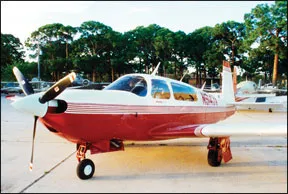
Mooneys h ave always enjoyed a reputation for being fast, easy-to-fly cruisers with average payload and a somewhat tight cabin. But the reality is that theyve been more efficient than fast. Bonanzas and Cessnas gas-thirsty 210 outrun most Mooney models but on balance, no airplane company has managed to squeeze as many knots out of as few horsepower. The sore-thumb exception to this is the Mooney M20M/TLS/Bravo series. For this model, Mooney entered the go-for-broke speed sweepstakes by stuffing the largest Lycoming engine it could find into what is, by even modern standards, a slick, drag-free airframe. The result? A fast cruiser but one limited in range by the Lycomings poor fuel specifics.
The M20M was clearly a departure for Mooney. Its previous entry into the fast-cruise turbocharged market had been the M20K/252/TSE, with a 210-HP Continental TSIO-360. It sipped fuel and had decent if not blazing cruise speed, but engine service issues troubled that model. Maintenance issues would dog the M20M but were sorted out with an engine modification. Buyers of the TLS Bravo are somewhat of a different breed. They gravitate to the type for raw speed and don’t care what it costs to get it. Said one owner:
“The TLS lacks the efficiency of the rest of the product line, but speed, rather than efficiency is what this model is all about.”
The M20M TLS/Bravo was introduced in 1989 as part of Mooneys expansion of its model line. In some ways, it was a case of making lemonade from lemons. The year before, the innovative Porsche-powered PFM had appeared, debuting a fuselage stretched from the M20J/M20K series. The PFM proved a dud for Mooney, mainly because it lacked the speed and performance of even the popular four-cylinder M20J/201. At the time, Mooney still had the M20K/252 in the line, but it became evident that buyers were gravitating towards ultimate performance and away from the traditional Mooney efficiency. Mooney dropped the 252 the following year.
The TLS truly was a different kind of machine. Larger aft cabin windows are the most obvious exterior change from the 231/252 models. The rear seat and aft bulkhead have been moved back to provide more interior space but preserve basically the same baggage area.
Also, the panel was redesigned, an artifact of the PFM control group requirement. This proved to be a mixed blessing. It does provide more knee room at the base of the panel and better organization, but the tradeoff is less visibility over the glareshield. Some owners say the effect is nearly claustrophobic. Realizing this, in its new Acclaim in 2007, Mooney lowered the panel more than two inches, restoring the view over the glareshield.
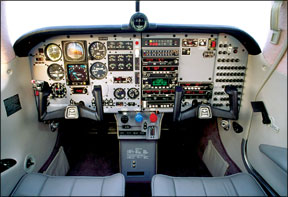
To balance the weight of the heavy Lycoming, there’s a slight increase in elevator area and a second battery located in the tail cone. The engine cowl, which has gaping, un-Mooney-like air in
takes-including a big NACA-type duct to supply air to the intercooler, is lighter than the 252s. Electrically operated, infinitely adjustable cowl flaps are included for cooling.
The landing/taxi lights are mounted in the wing leading edge in the TLS, a design change that both improved bulb life and lighting performance. In addition to dual batteries, the considerable electrical demand is supplied by dual, 70-amp alternators. Available equipment includes a mechanically driven standby vacuum pump. It automatically engages if the primary system fails. Later models were equipped with TKS de-icing systems.
Another first on the TLS is rudder trim. Its actually an electrically actuated, bungee-controlled rudder bias system. While maintaining yaw trim on smaller-engined Mooneys is not a high-workload affair, it is on the TLS, especially for a 20-minute climb into the teens or flight levels, where the airplane is happiest. For the TLS, Mooney didnt sell stripped down models. It came complete with a 115 cubic-foot oxygen system, speed brakes and a high-end avionics package. Quite a few TLS examples have the Bendix/King electronic horizontal situation indicator (EHSI) as an option and many have been upgraded with Garmin 400/500-series navigators. Bendix/King equipment was standard in the M20M until 1999, when the Garmin GNS navigators appeared in the model. In 2003, the Bravo DX was offered, with Garmin 430/530 suites. In 2006, the last model year for the M20M, the GX version has the Garmin G1000 as standard gear. All of the recent models have Bendix/King KFX225 autopilots, while earlier versions have KFC150s.
Engine, Performance
For power, Mooney picked the 270-HP Lycoming TIO-540-AF1A, a ground-boosted variant vaguely similar to the Piper Navajos powerplants. Although it has plenty of power for good climb rate, the Lycoming has poorer fuel specifics than large-displacement Continentals and high fuel burns are the result.
Further, the engine soon proved to be a maintenance hog in the form of excess exhaust valve guide wear. Owners were having to do expensive top overhauls barely a quarter of the way to TBO, something Lycoming engines arent noted for.
Lycomings fix was the so-called “wet head” which channels oil into the exhaust valve guides. This yielded a new engine designation, the TIO-540-AF1B, and it appeared in production models in 1996. It was also retrofitted to earlier TLSs. The B engine gave the airplane its new name-the Bravo.
You can immediately see if the mod has been done. Oil is fed through a series of external hoses leading to each head, where the oil is directed into a groove milled into the valve guide, drawing off heat and reducing wear. The mod worked. Premature valve wear declined and the engine is likely to make its 2000-hour TBO if flown regularly and maintained well. Overhaul cost, however, is quite high-well north of $40,000 in most cases.
Service history wise, the turbo installation is neither the best nor the worst. Our safety review of the airplane found three instances of fire caused by exhaust system leaks at the tailpipe V-joint. Given the airplanes small population, we consider that a fairly high occurence.
To feed the thirsty engine, fuel capacity was increased to 96 gallons (89 gal/534 pounds usable). Best angle climb (V x is 80 KIAS) produces a very high 703 feet/NM climb gradient. It also means you have no forward visibility. Best rate (V y is 105) results in an impressive 1230 FPM. A more sedate cruise climb speed of 120 to 140 KIAS should be used. The latter still produces a healthy 800 FPM, with good forward visibility and engine cooling.
Flight planning is important in the TLS. You can storm along at FL250 truing 220 knots-in the speed range of many turboprops. But at 20.5 GPH, endurance is only about three hours, so by modern standards, range is cramped. This can be addressed directly by installing long-range fuel tanks under an STC arrangement with Monroy Aerospace.
Setting power for best economy rather than best power costs only two or three knots at most altitudes and power settings in exchange for two or three gallons less fuel consumption. Compromising on lower power settings, particularly where winds are in your favor, can extend endurance out to as much as six hours plus reserve.
At FL 200, maximum cruise power of 2400 RPM/34 inches MP/17.6 GPH results in 204 KTAS. Cutting power and reducing fuel flow to 16.6 GPH still gives 202 knots. At below oxygen levels, the TLS still can churn out impressive speeds: 195 KTAS at 12,000 feet.
Pilots with Mooney experience adjust to the TLS easily. In some respects, there
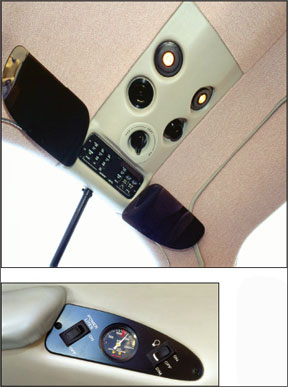
are more things to attend to, including the rudder trim, but these are offset by simpler systems. Power settings are made easier by the variable density wastegate controller on the turbocharger. Overall, the airplane is simpler to fly than the M20K, which requires engine operating finesse. Rotation at takeoff and getting the attitude right for landing are a bit easier. CG is a bit further aft, and the elevator is a tad more powerful.
Pilots used to Beechcraft and Cessnas will note some differences.
First, you sit almost on the floor, rather than on a chair. Eye level is low. And the Mooney is relatively low to the ground, which compounds sight picture over the nose.
The shock absorption in the Mooney gear design is a low-maintenance rubber donut system rather than oleo struts, but yields a rougher taxi ride.
Proper speed control is essential. Until you become practiced, it takes effort to land on the mains. If your speed is too high, you’ll float forever. Try to stuff it on the runway prematurely and you’ll be rewarded with a world-class case of porpoising, a common accident cause.
Otherwise, the TLS has good flight manners. The controls-particularly ailerons-feel a bit heavy. Rudder is the lightest of the three axes. Control actuation is via push-pull tubes rather than cables, which makes for a tight, direct connection. Properly rigged, Mooneys have good, precise handling and are fun to fly on instruments. And they handle turbulence well.
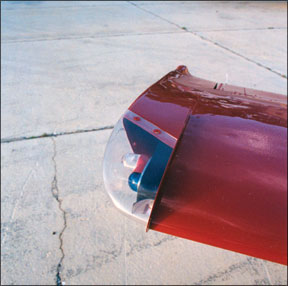
Optional Precise Flight speed brakes were offered starting with the 231 and 201 and are standard on the TLS. Most pilots think theyre the best addition to a Mooney (and a lot of other airplanes, as well). They simplify management of power, engine temperature and speed in descent.
Another area in which Mooneys have been improved-starting with later versions of the 201-is gear speed. Both gear and flap extension speeds were woefully low, particularly when operating in high density areas with a wide mix of traffic. Flap extension speed is still low on the TLS (110 KIAS), but gear extension speed is 140 knots on the TLS (Vlo for retraction is still 106 knots, however). Once the gear is out, maximum speed is 165 knots. This, in combination with the speed brakes, makes penetration descents possible without worrying about having to idle the engine.
One quirk of Mooneys is that extending the flaps requires significant pitch-down trim. The lower the indicated airspeed, the less obvious the trim change. However, transition from power-off or low-power approach with full flaps to a go-around or missed approach produces an immediate pitch up that requires a lot of pitch force or quick action on elevator trim to compensate for. This can be distracting and unsettling unless its anticipated.
LOADING/COMFORT
Mooney pilots and passengers have been better treated since the introduction of the first stretched fuselage, the Executive, in 1968. Improvements in interior design have made better use of available space. The TLS is a big improvement for both front- and rear-seat passengers. Rear-seat leg room is better, and the illusion of space created by the larger windows helps. It also improves pilot visibility to the rear.
Baggage space is adequate at just under 21 cubic feet. Maximum structural load is 130 pounds. Seats in the TLS are three-way adjustable and the front seats include an adjustable (inflatable) lumbar support. A nice touch is the way the rear seat backs fold down to provide a cargo compartment in back. The rear seat cushions can be yanked out to allow this.
Payload, as mentioned earlier, is adequate, even with full fuel. The TLS is not the load hauler that airplanes like the Cessna 210 or Bonanza are, but its in the
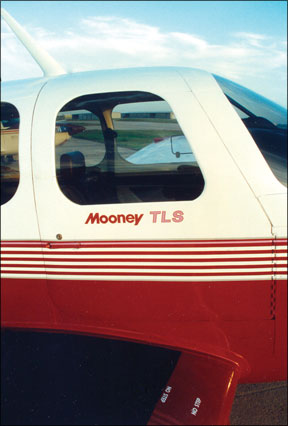
ballpark. Two people and some bags or two big and one or two small people with full fuel. But generally, Mooneys just arent four-person airplanes so if payload and range are key to your operation, think about a Cessna 210 or Bonanza A36 instead.
MAINTENANCE
In previous reports, owners have noted recurring problems with landing gear retraction. One noted: “Fortunately, the problem was getting the gear up rather than…down.” It happened three times to this owner. The limit switch was replaced each time. “That it happened once would be troublesome. That it happened three times is inexcusable,” he said. “Having to fly in excess of 10 hours with the gear down certainly defeated my purpose in acquiring such a plane.” The other owner said it occurred three times. Retraction tests did not uncover the problem until the third event. It was traced to a faulty microswitch.
Another owner said his service facility does not think the landing gear “biscuits” will last 300 hours under the heavier weight of the TLS. Reaction to Mooney support varies. Some term it good, particularly during the early teething pains of the first production airplanes. Others are not so sanguine, especially following one of Mooneys bankruptcies. As of early 2007, the companys new CEO, Dennis Ferguson, told us service and support is high on the list of things to improve.
Owner Feedback
I traded in a 1997 Mooney MSE for a new 2000 Mooney Bravo. During the past six years and 900 hours, the Bravo has ventured from its roost, Islip, on Long Island, on many long cross-country adventures in all kinds of weather. In addition to all of the local flights up and down the East Coast, we have been to Aspen, Las Vegas, The Turks and Caicaos, the Cayman Islands and Canada.
Mooney has advertised their aircraft as personal airliners. The Bravo, when properly equipped with known ice TKS and extended range tanks, is as close to an airliner as a piston single can get. The turbo gives you flight planning options that a normally aspirated engine simply cannot. Combining the turbo performance with TKS has allowed me to fly missions that would be impossible in any of Mooneys competitors aircraft.
I cannot praise the TKS system enough. I have had an inch and a half of ice on the landing light plastic cover without a speck of ice anywhere else on the airframe. On one Easter Sunday, my family and I were in a Norfolk FBO with a bunch of other pilots planning on returning to the Northeast to get back to work on Monday. Icing was in the forecast.
The other pilots were nervous. They were debating whether or not to scud run all the way up the coast. One Piper pilot asked me how I could file IFR and fly my family into icing conditions. He ended up scud running. We broke out of the clouds in a few minutes at about 10,000 feet and flew home in clear sunny VMC. We never had to turn on the TKS but couldnt have flown without it.
All of this utility of course comes at a price. The MSE actually got 21 nautical miles to the gallon, better than my Jeep! I fly the Bravo at a conservative 32 inches manifold pressure, 2400 RPM and no more than 1650 degrees TIT. Fuel burn at these power settings averages out to 20 gallons per hour or nine nautical miles to the gallon. This is about four gallons more than the POH advertises and why you need the extended range fuel tanks. You can achieve all of the POH stated airspeeds, although at higher than stated fuel burns.
Real-world indicated air speeds seem to work out to 170 knots at 5000 to 7000, 180 knots at 10,000 feet, 190 knots at 15,000 to 18,000, 210 knots at FL 250. All of these speeds are at a 20 gallon per hour fuel burn, so you can see the efficiency of flying high. In real world Northeast IFR flying, ATC seems to keep you between 5000 and 10,000 feet. An Ovation is faster and more fuel efficient at these altitudes.
On longer cross-country flights, I will file for 10,000 feet westbound into a headwind. I will file for 15,000 or 17,000 feet on the eastbound tailwind leg. We routinely see 225- to 250-knot ground speeds at these altitudes with a tailwind. Passengers don’t like wearing the oxygen masks.
My best ground speed in the Bravo was 326 knots at FL 230! The Bravo could benefit from a 100-pound gross weight increase. I have loaded the airplane down with TKS, extended range fuel tanks, radar altimeter, a Garmin 530/430 stack, Argus 7000 CE map, Skywatch, Stormscope, standby electric attitude indicator and so on.
The airplane has plenty of reserve power. Monroy Aerospace, which holds the STC for the extended range fuel tanks, told me that they obtain FAA ferry permits for flights at over 300 pounds above gross. The weight constraints require careful planning. Sometimes, we have to FedEx bags and ski equipment to our destination hotels. I have a bench back seat which can hold three children. The Bravo can be flown with four adults or two adults and three children with a partial fuel loading. In the summer, you can drain out most of the TKS fluid.
The Bravo is a lot more expensive to operate than an MSE. The turbo has not required any servicing expense. The expense comes from servicing all of the complex systems in the aircraft that allow the Bravo to be a “personal airliner.” The sophisticated Bendix/King autopilot can be expensive to maintain. I have a service contract with Bendix/King that now costs about $1800 a year.
My Bravo has received impeccable service from the dealer. I figure that it has cost between $20,000 and $30,000 a year to maintain the aircraft. The dealer shop that I used is probably the most expensive in the business. When you fly hard IFR in a single and long overwater flights, the expense is worth it.
Now it is time to talk about Mooney. They have had three owners, seven or eight CEOs and been in and out of bankruptcy since I bought the new MSE in 1997. The current owners eject CEOs like brass from a Colt .45. I lost my warranty, sweated out the bankruptcy and took a $100,000 hit in resale value when the new owners dropped the price on new models. My airplane was out of service stuck in the factory for six months because the factory had installed some flush rivets instead of standard rivets.
Sounds pretty awful, doesnt it? Mooney is blessed with a great design and true craftsmen that take pride in their product. I attended the MAPA October convention at the factory. You could see the dedication of the workforce when you toured the factory. The company appears to be on the road to success with a better customer service attitude and great new models. All they have to do is stop ejecting the brass!
Lycoming dropped the ball in the customer service department in regard to the crankshaft AD recall. However, the 270 horsepower Lycoming in the Bravo is a great engine. There were problems with the first editions of the engine when they first came off the line. Since the Bravo engineering fix, the engine has been bulletproof. My engine starts reliably in any weather and barely burns any oil. The automatic controller makes the turbo operation a snap. My shop states that the engines make TBO without cylinder replacements or costly repairs when they are run at the conservative 34/2400 1650 TIT power settings.
The Bravo is not inexpensive to properly maintain nor cheap to operate. However, its the most capable single engine all-weather piston you can buy. You will have to jump up to a turbine single to do better.
Bob Anderson
Islip, New York
I purchased a TLS from Mooney in late 1989, the first year of production. Performance is a real plus and meets the book values very closely. I normally fly in the mid-teens and get true airspeeds of 200 to 205 knots at 32 inches MP and 2400 RPM. Fuel burn at these conditions is 16.5 to 17 GPH. For a 600- to 700- mile trip with a cruise altitude of 15,000 to 17,000 feet, I plan on a fuel burn rate of 20 GPH for the first hour and 17 GPH for the rest of the trip.
I fly the aircraft on business trips on the West coast and have been coast to coast a couple of times. I can really recommend the TLS for cross-country travel. Depending on wind and weather, I will fly 600 to 750 mile legs, or about 3 to 3.5 hours. This is my personal endurance limit.
I took delivery of the TLS shortly after it was certified in 1989, so I have experienced a lot of the expected teething problems of a new model. Mooney has provided excellent customer support during this period. One of the major problems was the landing gear intermittently failing to retract. Naturally, when we took it to the Mooney service center and jacked it up, it worked. Then a couple of flights later it would not retract after takeoff. Finally, about the third time on jacks it failed, and we isolated the faulty microswitch and replaced it.
On the powerplant, there have been some expensive problems for a low-time engine. First, the density controller leaked oil, could not be fixed (possible porous castings), and had to be replaced at 205 hours. It was no longer under warranty and cost $1700. At 260 hours, the left magneto failed and had to be replaced, again not under warranty since it is an engine part and is covered for only one year.
R.E. Sheets
Anaheim, California
RELATED ARTICLES MORE FROM AUTHOR
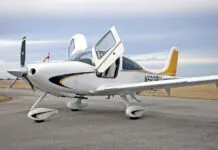
Cirrus SR20
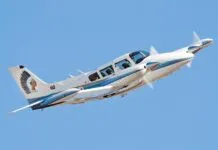
Piper Twin Comanche
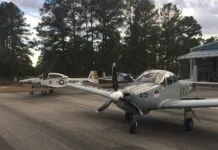
Featured Video
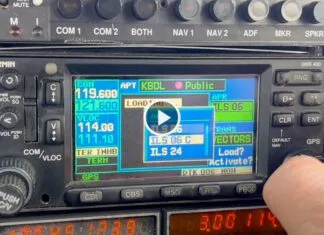
Garmin GNS 430: Throwaway or Keeper?
- Online Account Activation
- Privacy Policy
- Aircraft For Sale
- AVwebFlash Current Issue
- AVwebFlash Archives
- Aviation Consumer
- Aviation Safety
- IFR Refresher
- Business & Military
- eVTOLs/Urban Mobility
- Experimentals
- Spaceflight
- Unmanned Vehicles
- Who’s Who
- Video of the Week
- Adventure Flying
- AVWeb Classics
- CEO of the Cockpit
- Eye of Experience
- From The CFI
- Leading Edge
- Pelican’s Perch
- The Pilot’s Lounge
- Brainteasers
- Company Profile
- Flying Media Offers
- Question of the Week
- Reader Mail
- Short Final
- This Month In Aviation Consumer Magazine
- This Month In IFR Magazine
- Farnborough
- HAI Heli Expo
- Social Flight
- Sun ‘N Fun
- Women in Aviation
- Accidents/NTSB
- Aeromedical
- FAA and Regs
- Flight Planning
- Flight Schools
- Flight Tracking
- Flight Training
- Flight Universities
- Instrument Flight
- Learn to Fly
- Probable Cause
- Proficiency
- Risk Management
- Accessories and Consummables
- Aircraft Upgrades
- Equipment Reviews
Maintenance
- Refurb of the Month
- The Savvy Aviator
- Tires/Brakes
- Used Aircraft Guide Digest
- Electronic Flight Bag
- Engine Monitors
- Portable Nav/Comm
- Specifications
- Sign in / Join
- Register Now
- Customer Service
- Reset Password

- Sign up for AVweb Flash
- Read AVweb Flash
- Aviation Publications
- Contact AVweb

Starliner Crewed Launch Scrubbed

Joby Completes Pre-Production Flight Testing, Eyes Air Certification For Electric Air…

LSA-Based Exploding Drones Used In Attacks On Russia
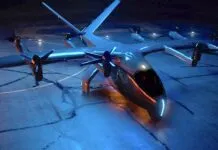
Archer Reports Success With Battery-Pack Drop Testing

A California Mom May Tip The Fuel Battle Scales

Guest Blog: Beloved Late Southwest President Colleen Barrett Led With Heart

NATA’s Hard Line Complicates Fuel Quest
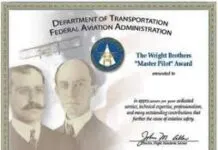
CEO Of The Cockpit: Master Of My Domain
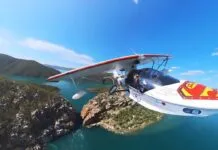
Picture Of The Week, May 17, 2024

Best Of The Web: Washington Flyby
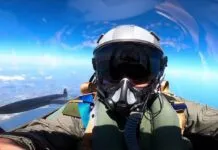
Best Of The Web: Pure Power
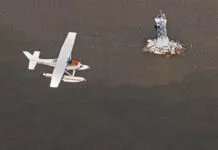
Picture Of The Week: May 3, 2024

Short Final: Seeing The Light
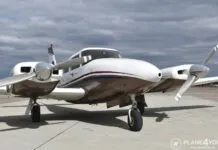
Short Final: Quick Avionics Upgrade

Short Final: Better-Than-Passing Grade

Short Final: Student Workout
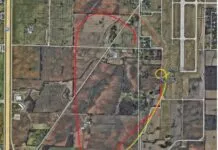
NTSB: Rule Violation Contributed To Fatal Midair Collision At EAA AirVenture

Alaskan Instructor Wins Martha King Scholarship

Sun ‘n Fun 2024: Bose A30 Headset
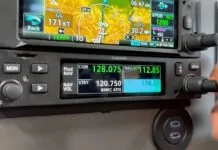
Sun ‘n Fun 2024: Garmin VHF Radios

Bipartisan FAA Reauthorization Act Signed Into Law

Senate Confirms Homendy To Continue As NTSB Chair
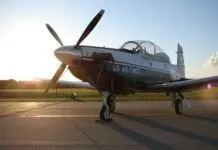
Instructor Dies After Texan II’s Ejection Seat Activates On Ground

Citizens Group Targets EAGLE Co-Chair And NATA Head Castagna
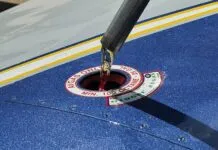
Court Action Looms Over California Unleaded Fuel Availability

‘Climate-Smart’ Corn-Based SAF Rules Defined
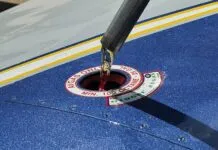
G100UL Maker Refutes NATA Claim That It’s Not Ready To Sell
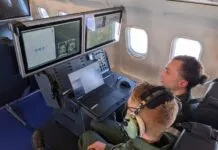
Unjammable ‘Quantum Navigation’ Tested in U.K.

ForeFlight Introduces Reported Turbulence Map

uAvionix Gets FAA Airport Surface Situational Awareness Contract
- features_old
Mooney M20K, 231/252
Mooneys m20k demands careful engine management and maintenance, but the payback comes in the form of impressive speed and efficiency..
If age mellows people, the same might be said for airplanes, at least if the airplane in question is Mooney’s M20K series. The airplane arrived in the GA market at a time when turbocharging was relatively new and the demand for high-flying aircraft was thin.
Mooney didn’t get the M20K’s turbocharging system right on the first try and the airplane developed a reputation as a maintenance hog. Thirty years later, that reputation has been mostly burnished and the fact that the M20K bores along between 160 and 200 knots on relatively little fuel has improved the model’s used price.
Still, the cabin is small and with a single door, hard to get into. For that reason and others, Mooneys have a bit of cult status to them. They are in no way everyman’s airplane in the way that a Cessna or a Piper is. But if cruising fast yet miserly is your desire, the Mooney M20K models—the 231, the 252 and the Encore—are strong contenders.
Mooney M20K Model History
Mooney came into the turbocharging game relatively late compared to other manufacturers. In 1966, Cessna pioneered the market with the T210 and made a strong showing in the single-engine, high-altitude market. Beech brought out the V35TC in 1966, but it was never as strong a seller as the A36.
Mooney wasn’t completely flat footed during the 1960s, introducing the 310-HP M22 Mustang in 1967, a big brute of an airplane that was, to some, as ugly as it was unsuccessful.
Through the 1970s, Mooney did well with small, efficient airplanes powered by Lycoming four-bangers. Mooney’s big breakthrough came in 1977, when the Mooney M20J 201 was introduced as the fruit of a clever Roy LoPresti-led aerodynamic cleanup of the venerable F-model. The Mooney 201—named for its maximum speed in miles per hour—marked a turning point for Mooney, even if the claimed speed was somewhat optimistic. In 1977, Piper had the Turbo Arrow and Mooney realized it needed to compete in this market.
The result appeared in 1979 as the Mooney 231—again, named for its top speed—or Mooney M20K. It was essentially a Mooney 201 with a six-cylinder, 210-HP Continental TSIO-360-GB in place of the 201’s 200-HP Lycoming IO-360.
The Mooney 231 airframe had a lot going for it. It was strongly built of welded 4130 steel, the gear system was all but indestructible and the handling was mannerly, easily flown by a pilot with minimal retrac experience. By modern standards, Mooney had a smash hit on its hands. It sold 246 airplanes the first year, outdistancing the 201 by nearly two to one. The fact that the two airplanes were so similar simplified the build process and likely made the project profitable from the first year.
The differences are in minor aerodynamic refinements. The K-model’s fuel capacity is 10 gallons more than the J-model, and both empty and gross weights are 160 pounds higher. Design-wise, the Mooney 231 was exactly what the buyers were looking for: a turbocharged 201.
But if buyers were hoping for the 201’s excellent dispatch rate, they got something less. Problems with the Mooney 231’s Continental engine were several fold and hurt the model’s initial reputation. The new cowling didn’t cool the engine adequately; the fixed-wastegate turbo required constant attention and was easy to mismanage; overboosting and high heat put undue stress on the engine, and it was prone to cracking cylinders and cases.
The connecting rods were prone to failure and the original magnetos were unpressurized, and would arc at high altitude. On top of all this, the TBO of the first engines was a miserly 1400 hours, later upped to 1800 hours, where it still stands.
Even with all these faults—and they were considerable—some owners achieved impressive maintenance reliability by obsessive attention to operating technique. Specifically, that meant careful leaning and attention to cowl flaps and preventive maintenance of the turbo. But not all owners were so careful—premature engine crumps were common.
Mooney 231 Refinements
With a couple of years of experience under its belt, Mooney undertook some improvements, adding a split rear cargo seat in 1982, while in 1984, a new variant of the engine—the LB1B, which is approved as a replacement for the GB—was introduced with better cooling and overboost protection. Mooney also included some aerodynamic tweaks that added 3 to 5 knots: sealed nose gear doors, a belly pan, a more streamlined tailcone and removal of one of the vent intakes. The alternate air intake system changed to address reports of icing-induced power loss.
While these fixes certainly helped, the improvements were hardly night and day. By 1986, further retooling produced the Mooney 252TSE for Turbo Special Edition. The Mooney 252, while still an M20K, is significantly different from the Mooney 231. Another variant of the engine was fitted, the -MB1. The induction and cooling systems were reworked and a new intercooled, density-controlled, variable wastegate AiResearch turbocharger replaced the original, fixed wastegate Rajay/Rotomaster unit. Other changes included infinitely adjustable electric cowl flaps to replace the original dual manual flaps. There was a vernier throttle control, more elbow room and new-look radiused windows.
The Mooney 231’s original 60-amp, 14-volt electrical system was upgraded to a 70-amp, 28-volt system. This was much needed, since a fully loaded K-model could max out the electrics long before the days of moving maps. An electrically driven backup vacuum pump was made standard equipment.
The Mooney 252 also got further aerodynamic tweaking in the form of gear doors that fully enclose the wheels when retracted and cover the wells when the gear is extended. The 252 also got an increase in gear-extension speed to 140 knots, up from 132 knots. Maximum speed with gear extended is 165 knots for the 252. In all, 889 231s were produced between its introduction in 1979 and 1985. The 252, introduced in the middle of the GA slump of the 1980s, is less numerous. Production totaled, ironically, 231 airplanes. The K-model made a brief resurgence in 1997 as the Encore, when Mooney was going through yet another of its many reorganizations. But it was not to be and the model was dropped again in 1998. Meanwhile, the so-called long-body models, specifically the M20M TLS and later the M20R Ovation and Acclaim eventually came to dominate the Mooney line.
Mooney M20K Performance
The K-model lives in a league of its own when measured against the narrow market segment of four-place, turbo retractables. At cruise, the Mooney 231 outstrips its competitors—the turbo Arrow, the 182 RG and Commander TC—by roughly 20 knots, despite the fact that the 231 MPH (196 knots) top speed isn’t reachable under real-world conditions and probably at all.
Realistic max cruise is about 190 knots for the 231, but 170 to 175 knots is more like it. The 252 is about 10 knots faster, thanks to intercooling. Both M20Ks win the altitude battle as well, with a maximum operating altitude of 24,000 feet for the 231 and 28,000 feet for the 252, versus 20,000 feet for the Cessna and Piper. The Mooneys outclimb the others by about 150 FPM.
Due to physiological considerations, however, high teens to low 20s are the airplane’s best envelope. At lower altitudes, turbocharged airplanes aren’t much faster than their normally aspirated siblings.
In fact, the Mooney 231 is actually slower than the 201 below 8000 feet, due to cooling drag. The J-model will also outclimb the K-model below 8000 feet.
Many owners operate 252s conservatively. One owner told us that 65 percent power yields 170 knots at 10,000 feet and 200 knots at FL210, burning 11.5 GPH. The 231’s numbers are proportionately lower at high altitudes, although the difference lessens the lower one goes.
With 75.6 gallons of usable fuel, the 252 can climb to FL280 and operate a total of 4.9 hours, or just under 990 nautical miles still-air range with reserves. The 231 has comparable range and endurance, but can’t fly as high.
How the Mooney 231 Differs from the Mooney 252
The improved powerplant installation makes for a significant operational difference between the 231 and 252. The engine still produces 210 HP, but it does so at a markedly lower manifold pressure: 36 inches for the 252 versus 40 inches for the 231, thanks to the improvements in the tuned induction, cooling and the turbo system.
The 252’s induction and cooling air intakes are separate from one another. Induction air enters through a NACA scoop on the side of the cowling, is turned 90 degrees to minimize induction icing through inertial separation and passes through a larger, less-restrictive air filter. It’s then compressed and run through a 42-square-inch intercooler.
The result is dramatically lower temperatures for the induction air, from 60 degrees F at lower altitudes to 120 degrees F up high. That means more power at higher altitudes and a wider detonation margin. The 231’s critical altitude is only 14,000 feet, while the 252’s critical altitude is 24,000 feet. In practical terms, this means that the 252 can continue to climb at about 1000 FPM into the mid-20s, can fly higher and is faster once up there.
The most important difference between the Mooney 231 and 252 lies in engine management. The revised powerplant installation in the 252 made an enormous difference and makes the 252 a more desirable airplane. Because the Mooney 231 has a fixed wastegate, the pilot must constantly monitor manifold pressure and fiddle with the throttle to keep it within limits. Bootstrapping and overboosting are constant worries. Thanks to its automatic wastegate, the Mooney 252 doesn’t suffer these foibles.
Mooney 231/252 Handling
The 231/252 series handle like typical Mooneys: relatively heavy in roll and pitch, with good stability. The K-models have greater pitch authority, thanks to a slightly larger elevator and the longer engine makes it somewhat nose heavy. That can make flaring a challenge with a forward CG, but nothing like, say, a Cessna 182.
Pitch change with gear extension/retraction is slight, but flap extension produces a nose-down moment. Transition from full flaps to trimmed for go-around takes heavy pressure on the yoke and fast action on the trim. Using the electric trim, anticipation of configuration changes helps reduce pilot effort.
Speed control is essential when approaching and landing any Mooney. Approach too fast and the K-model will float. Try to plant it on the ground and it will fight back, porpoising vigorously and striking the prop if uncorrected. This is a common accident for all Mooneys, not just the K-model.
Because of its ability to fly fast, some owners say the best addition ever devised for Mooneys are speed brakes. These are especially useful for the Mooney 231, which doesn’t have the 252’s higher gear limits. (Speed brakes are standard on Mooney 252s.)
Ground handling isn’t great. The airplane is low slung and the Mooney’s stretched-out seating position hinders visibility on the ground. It also makes gaining purchase on the brakes difficult. The wing span (36 feet, 1 inch), combined with the wide turning radius of 41 feet, makes negotiating a crowded ramp challenging. One other caution: Many Mooneys suffer damage to the nose gear trunion when towing turn limits are exceeded via power towing. Owners learn to watch the ramp rats carefully.
Mooney 213/252 Payload and Cabin
On paper, the Mooney 231 and 252 have the same loading characteristics. In reality, however, the typical 252 weighs more, simply because it has more equipment. Neither airplane is a stellar load-hauler. Gross weight is 2900 pounds and basic empty weight is 1800 pounds, usually more. Real-world, full-fuel payloads are on the order of 400 to 500 pounds, making the M20K a useful two-place airplane, with generous baggage. Thanks to its fuel efficiency and good endurance, however, there’s flexibility built into the load-carrying equation. The latest Mooney M20K, the Encore, has about 200 pounds of additional load, thanks to beefier landing gear. Staying within the CG is easy and there’s no worry of aft-tending CG as fuel is burned off.
The baggage compartment is large, with a capacity of 120 pounds, although the high sill door makes it difficult to wrestle large objects into the airplane. Baggage capacity can be increased by folding the rear seat backs down together or individually.
Mooneys are fast and efficient because they have low-drag airframes with a small frontal area. That translates into cramped quarters. The seating position is quite different from that of most airplanes. It’s more of a sports-car posture than an upright seating regime. There’s plenty of leg room fore and aft, but less lateral room. Those of below-average height may find that they can’t reach the rudder pedals without a booster cushion behind their backs or pedal extensions.
Early Mooneys tended to be Spartan in interior arrangements. But by the time the 231/252 appeared, Mooney recognized the need for more modern if not luxurious appointments. Thanks to a bit more elbow room and somewhat plusher finish, the 252 is more comfortable than the 231. The 252 is also quieter and many feel it’s the quietest of all Mooneys, thanks in part to the induction system and the fact that things quiet down the higher you fly.
The panel layout is quite good, with one seemingly obvious feature that has probably averted many incidents: The gear selector is located high in the middle of the panel so it’s hard to miss. The flap switch is located low on the center console, along with the trim/flap indicators and, in the 252, cowl flap controls.
The power gauges are on the far right and angled toward the pilot. Engine gauges are well-placed, right under the glareshield in front of the pilot. The panel also has a good selection of annunciator lights at the top of the radio stack.
Mooney 231/252 Maintenance
Airframe-wise, Mooneys are relatively trouble-free. Long-standing caveats include the potential for corrosion of the cabin frame tubes—particularly if the windows develop leaks—and the typical fuel tank leaks that plague all Mooneys. Systems in general are simple and robust. The steel gear legs gear have no oleo struts, relying instead on rubber donuts for shock absorption. These need to be replaced periodically. There’s no complex electro-hydraulic system driving the gear as is found on Cessnas—Mooneys are electromechanical. The flaps, too, are electric, and both are relatively trouble-free.
The Mooney powerplant, however, is another matter. Difficulties fall into several categories: magnetos, con rods, cylinders and turbos. Most airplanes have been retrofitted with pressurized mags, but check any used model to be sure. The same applies to connecting rods. The suspect rods are Continental part number 626119 and have a C logo with a circle around it. Only a barn dweller would still have the old ones.
Many turbocharged models encounter mid-run cylinder problems of some sort and the K-model is no different. These include the full litany: worn valves and guides, broken rings and cracked jugs. Mid-time turbo and magneto replacements aren’t uncommon, but they aren’t a sure bet, either. The 231’s fixed wastegate means the turbo is working constantly and the engine is susceptible to overboosting.
The Mooney 252 doesn’t suffer these problems, although it had trouble with cracked tubes in the induction system before Continental came up with flexible tubing. Even though the 252’s engine installation is less troublesome than the 231, temperatures and stresses on turbocharged engines are greater than on normally aspirated engines. Regular inspections and proactive maintenance is a must for reliable dispatch rates.
Mooney 231/252 Mods and Clubs
By far the most desirable mods for the Mooney 231 are those that make it more like the 252. These include intercoolers from Aircraft Modifications, Inc. (253-851-6440) and the Merlyn Black Magic upper deck controller; contact www.merlynproducts.com or 800-828-7500. Both work as advertised and help eliminate the 231’s engine problems. They also make the 231 perform almost as well as a 252. We consider the Merlyn a must-have for the 231.
There are fewer speed mods for the K-model than for earlier Mooney types, such as the C, F and J models. Single-piece belly skins, minor speed mods, rudder and elevator hinge covers and oversized bushing kits for the nose gear are available from Lake Aero Style and Repair ( www.lasar.com , 800-954-5619).
Precise Flight ( www.preciseflight.com , 800-547-2558) offers speed brakes for the K-models. LoPresti Speed Merchants ( www.speedmods.com , 800-859-4757) has an HID landing light for the K-model and hub caps with filler valve access holes Mod Works, another well-known Mooney house, retains some 39 STCs for Mooneys. However, the facility was wiped out during Hurricane Charley in 2004 and is out of operation indefinitely. Mod Works can still be reached at 941-637-6770.
A big-dollar mod, the Rocket conversion, replaces the TSIO-360 with a 305-HP Continental TSIO-520-NB, yielding 220-knot-plus cruise speeds. Although the conversion is discontinued, these turn up on the used market. Contact www.rocketengineering.com. The thirstier engine in that mod will benefit from larger fuel tanks. Monroy Aerospace ( www.monroyaero.com ) has an STC to raise capacity to 106 gallons. Hartzell offers three-blade prop conversions ( www.hartzellprop.com ).
Currently, there are two Mooney Associations, the Mooney Aircraft Pilots Association and Mooney Owners of America. Both have membership benefits, technical support and magazines. Contact MAPA at www.mooneypilots.com and MOA at www.mooneyowners.com .
Mooney 231/252 Owner Feedback
I purchased my 1981 Mooney 231 when I lived in Colorado. A turbocharged plane was necessary to fly west over the mountains. This made it possible to go to Steamboat Springs for breakfast or lunch, plus it enabled a more direct route to Scottsdale, Arizona.
My 231 has built-in oxygen for all seats and a large oxygen bottle which must be periodically removed from the battery compartment for recertification. This is not an inexpensive proposition and may keep the airplane on the ground, or at least at lower altitudes, until it’s accomplished.
One of the pleasures is seeing the GPS recording in excess of 200 knots ground speed returning from the mountains to the flatlands under normal power settings. Speed brakes are essential to come down from 17,000 without super cooling the engine. However, I used around 150 to 165 knots for normal flight planning.
Learning to land the Mooney was problematic for some reason. Coming in with half flaps and adding a little power prior to touchdown seemed to help, but I am still working on consistency without ballooning or dropping it in. Sometimes it is difficult to judge how high you are above the runway compared to other airplanes. The rudder pedals are small and one needs to make sure that you are not landing with your feet on the brakes.
Michael Williams
Horseshoe Bay, Texas
After renting Mooneys for almost 20 years, I became involved in a flying club that had Piper Cherokee 180s (108 knots on 8.2 GPH). My wife scared me on a Cherokee flight asking, “What’s wrong with the plane?” After I checked everything, she responded that it was taking so long to arrive at our destination. That’s why in 2001 we purchased a 1980 Mooney 231.
It has several upgrades, including a three-blade McCauley prop, electric standby vacuum pump, intercooler for the turbocharger, the Garmin GNS530/430 combination in lieu of the standard BendixKing radios and an Aspen PFD.
As this is primarily a go-higher, go-faster plane with a reputation for an engine that runs hot, I changed to GAMI fuel injectors and took out the old mechanical engine gauges after installing a JPI EDM930. The EDM930 is a critical change and allows me to operate LOP in cruise, which totally controls the propensity for hot CHTs. During ROP in cruise, it was not uncommon to see cylinders in the 385-425 degree range. Operating LOP, the temps are 345-380. Flying at 12,000 feet, LOP and at 65 percent power I experience 160-165 knots at 9.7-10.1 GPH. At 14,000 feet the fuel burn is almost the same, but the speed is bumped to 166-170 knots.
The fuel tanks on Mooneys seem to leak at 20-year intervals so I had mine resealed, while also adding two 20-gallon aux tanks. The fuel selector remains simple—left and right—so there is no added complexity. If I can accommodate the weight, I could fly 1400 NM nonstop. I make several six-hour nonstop trips a year from Tampa, Florida, to Traverse City, Michigan, on about 72-76 gallons (no-wind flight planning). That leaves plenty of fuel reserve.
Mechanically, the aircraft is very robust with major components like the landing gear requiring few if any repairs. The landing gear in all the Mooneys I’ve flown has been bulletproof; the electric gear is rapid actuating and useful to slow things in the pattern if the aircraft is not fitted with speed brakes. The K-model can be fitted with either long-range tanks or speed brakes, but not both.
Annual inspections are typically less than $1600 unless there is an issue (which thankfully hasn’t happened in several years). Parts availability has always been good.
As it is hangared in Florida, I had the tubular steel structure checked for rust and corrosion and none was found. The aluminum had only two places of corrosion smaller than the size of a dime around the fuel filler cap. The TSIO-360LB engine was a source of issues, including Continental cylinders which developed cracks between the valves and become non-repairable. My current cylinders have over four years in service without a problem. Zephyr Engines here in Central Florida has been excellent both during and after the installation of the rebuilt engine, offering outstanding support.
Alternators (there is only one on the early 231 models) tend to be a sore spot and I have installed three in 10 years. It is the gear-driven design on the rear of the engine which is subject to heat. Finally, there is an STC for a modern model, which is much lighter and hopefully more durable.
As this is a slick, relatively high-performance machine, I take recurrent training offered through MAPA. It offers a two-day course in various locations, and the course and instructors are truly outstanding. If you plan to operate an aircraft like this, recurrent training is a must.
I really like my 231. It is fun to fly, it can fly approaches at 130-plus knots when required to sequence in with the jets, it is durable—with great parts availability—and it can sip gas (while LOP) and still make decent speeds.
Bob Cochell
Tampa, Florida
My Mooney 231, N10162, was originally showcased in a Mooney company product photo shoot. Purchased approximately eight years ago following an extensive renovation in Texas and ferried to Connecticut, I quickly completed type-specific training with local designated examiner Wally Moran. Our 231 had approximately 700 hours total time when we took delivery, plus it had new paint and a new interior.
We fly the airplane approximately 50 hours per year, and as an instrument-rated commercial pilot I typically complete a minimum of two IPCs annually, as well as at least one FAA Wings program phase.
We base the aircraft at Hartford Brainard Airport in Connecticut and have it maintained by Total Aircraft Maintenance on the field. N10162 boasts an intercooler, RayJay turbocharger, King KFC200 autopilot, a Garmin GNS430, plus an HSI system.
We make good use of the oxygen system, since the aircraft can cruise up to 24,000 feet. We typically cruise at 170 knots at 58 percent power while burning roughly 10.5 GPH.
The aircraft is always hangared. Including hangar fees, insurance, annual inspections, plus our careful attention to avionics and maintenance work, the hourly cost of operation is approximately $275.
With a comfortable interior—and with styling similar to a sports car—my wife Cheryl and I typically enjoy flights from Connecticut to Maine and Nantucket, Massachusetts. So far our longest flights have been to Michigan and Minnesota.
Like so many Mooney pilots we adore our 231’s speed and efficiency. We live by the Mooney creed: We love to fly—fast.
Tony Crespi
Hartford, Connecticut
Because of its ability to fly fast, some owners say the best addition ever devised for Mooneys are speed brakes. These are especially useful for the 231, which doesn’t have the 252’s higher gear limits. (Speed brakes are standard on 252s.)
Payload/cabin
On paper, the 231 and 252 have the same loading characteristics. In reality, however, the typical 252 weighs more, simply because it has more equipment. Neither airplane is a stellar load-hauler. Gross weight is 2900 pounds and basic empty weight is 1800 pounds, usually more. Real-world, full-fuel payloads are on the order of 400 to 500 pounds, making the M20K a useful two-place airplane, with generous baggage. Thanks to its fuel efficiency and good endurance, however, there’s flexibility built into the load-carrying equation. The latest M20K, the Encore, has about 200 pounds of additional load, thanks to beefier landing gear. Staying within the CG is easy and there’s no worry of aft-tending CG as fuel is burned off.
The powerplant, however, is another matter. Difficulties fall into several categories: magnetos, con rods, cylinders and turbos. Most airplanes have been retrofitted with pressurized mags, but check any used model to be sure. The same applies to connecting rods. The suspect rods are Continental part number 626119 and have a C logo with a circle around it. Only a barn dweller would still have the old ones.
The 252 doesn’t suffer these problems, although it had trouble with cracked tubes in the induction system before Continental came up with flexible tubing. Even though the 252’s engine installation is less troublesome than the 231, temperatures and stresses on turbocharged engines are greater than on normally aspirated engines. Regular inspections and proactive maintenance is a must for reliable dispatch rates.
By far the most desirable mods for the 231 are those that make it more like the 252. These include intercoolers from Aircraft Modifications, Inc. (253-851-6440) and the Merlyn Black Magic upper deck controller; contact www.merlynproducts.com or 800-828-7500. Both work as advertised and help eliminate the 231’s engine problems. They also make the 231 perform almost as well as a 252. We consider the Merlyn a must-have for the 231.
A big-dollar mod, the Rocket conversion, replaces the TSIO-360 with a 305-HP Continental TSIO-520-NB, yielding 220-knot-plus cruise speeds. Although the conversion is discontinued, these turn up on the used market. Contact www.rocketengineering.com . The thirstier engine in that mod will benefit from larger fuel tanks. Monroy Aerospace ( www.monroyaero.com ) has an STC to raise capacity to 106 gallons. Hartzell offers three-blade prop conversions ( www.hartzellprop.com ).
Owner feedback
Michael Williams Horseshoe Bay, Texas
Bob Cochell Tampa, Florida
Tony Crespi Hartford, Connecticut
LEAVE A REPLY Cancel reply
Log in or Register to leave a comment
AVweb Insider
Featured video.

- Privacy Policy

IMAGES
VIDEO
COMMENTS
Mooney M20M Description The Mooney M20M Bravo GX is a high-performance, single-engine aircraft manufactured by Mooney International Corporation. The aircraft features a sleek, aerodynamic design, retractable landing gear, and is powered by a 280-horsepower Continental TSIO-550-G turbocharged engine, which provides excellent speed and fuel ...
It's usually speed, not systems, Mooney lovers dwell upon. Owners of 180-hp, short-body airplanes say to count on a maximum cruise speed of 140 to 147 knots, with the company claiming 150 as the 75-percent-power cruise. With the smaller fuselage and the larger engine, the M20E is supposed to turn in nearly 160 knots at optimum altitude ...
The Mooney M20 is a family of piston-powered, four-seat, propeller-driven, ... Mooney M20M with the Lycoming turbocharged engine. In February 1989, the next M20 model was released: the M20M TLS (Turbocharged Lycoming Sabre). ... Cruise speed: 175 kn (201 mph, 324 km/h)
The sore-thumb exception to this is the Mooney M20M/TLS/Bravo series. For this model, Mooney entered the go-for-broke speed sweepstakes by stuffing the largest Lycoming engine it could find into what is, by even modern standards, a slick, drag-free airframe. ... A more sedate cruise climb speed of 120 to 140 KIAS should be used. The latter ...
The Mooney PFM was produced through 1990. M20M. The M20M, also called the M20M TLS (Turbocharged Lycoming Sabre) was produced from 1989 until 2006 had a 270-horsepower turbocharged engine and 3-blade propeller. ... Cruise Speed: 158 kts; Stall Speed: 50 kts; Fuel Consumption: 8.5 gallons per hour at 75% power; Max Range: 659 nautical miles;
2006 Mooney M20M Bravo. By Staff Updated February 22, 2016 Save Article. 2006 Mooney M20M Bravo ... CRUISE SPEED, 75% power (kts.): 214: MAX RANGE (nm): 1150: FUEL CONSUMPTION, 75% power (gph): ... 1200: Landing over 50 ft. obstacle (ft.): 2600: Source: Jane All The World's Aircraft 2006/2007 and www.mooney.com: Popular. Mysteries Of Flight ...
Mooney M20M TLS/Bravo A definite step away from the Mooney tradition of efficiency, the TLS is designed for flat-out high-altitude performance. ... Best rate (Vy is 105), results in an impressive 1,230 FPM, also making visibility in front next to nil. A more sedate cruise climb speed of from 120 to 140 KIAS should be used. The latter still ...
By Staff Updated February 22, 2016 Save Article. Mooney Bravo M20M. Base/used Price: $481,950. Engine make/model: Lycoming TIO-540-A1FB. Horsepower: 270.
The M20C has a maximum gear retraction speed of 105 knots and flap speed of 89 knots, so it requires some thought when descending at 160 knots. Late model Mooneys with cruise speeds of over200 knots are equipped with pop-up speed brakes on the wings, a modification fitted to many earlier models.
View and Download Mooney M20M pilot operating handbook online. M20M aircrafts pdf manual download. ... (Cruise Climb) Gear down. Landing. Taxi after Landing. Securing the Aircraft. Table of Contents. Aileron System. ... Vertical Speed (VS) Approach Mode Altitude Capture via Altitude Preselect Indicated Airspeed (IAS) VOR/LOC Vertical Navigation ...
The Bravo will maintain a strong rate of climb through 18,000 feet, above which the climb rate dips below 500 fpm. Mooney lists the Bravo's maximum rate of climb from sea level — using full power and a high-deck-angle 105 knots indicated — as better than 1,100 fpm. Weight plays a big part in climb performance; leave 250 pounds of stuff at ...
Best Cruise Speed: 223 KIAS. Best Range (i): 1,022 NM. Fuel Burn @ 75%: 18.0 GPH. Stall Speed: 58 KIAS. Rate of climb: 1,230 FPM. Ceiling: 25,000 FT. Takeoff distance: 1,080 FT. ... Advertise your MOONEY M20M TLS on this page Learn more Find and Compare MOONEY M20 for sale Also Consider. CESSNA 400 (2004 - 2010) ...
Also in 1989, Mooney addressed a common complaint about comfort in the M20 airframe, and extended the fuselage by 18 inches. The first model to take advantage of the new dimensions was the M20M TLS. With a 350-hp Lycoming, derated 270 hp, the TLS turned in an effortless 223-knot high-speed high-altitude cruise speed.
The Mooney M20 is a single-engine four-seat touring aircraft produced by the US-American manufacturer Mooney Aircraft, Inc., later Mooney Aircraft Corporation and Mooney Airplane Company. The Mooney M20 was built in three different fuselage lenghts (short: 7,07 m / 23ft 2in, medium: 7,40 m / 24ft 3in, long: 8,15 m / 26ft 9in). max. Cruise Speed.
I am curious what settings others use for cruise...lately I've been using 2,450/24 square either 75rop getting close to 145k avg ground speed@ 11gph....or 25 lop getting 130k @7.4gph these are at 2,000' 45f
MOONEY M20M WITH R-134a AIR CONDITIONER SYSTEM ... SELECT - HI or LO speed (fan only) or 2. Air Conditioner Cooling Switch.....SELECT - LO or MAX ... Flight tests have determined that cruise performance with Air Conditioning System ON is reduced by 1.17 %. The pilot should compute fuel burn, range and endurance data based on
Built for speed, the Mooney M20F has a cruise speed of an astonishing 156 KIAS. With over 1000 examples built, the M20F costs between $85,000 and $135,000 used. Powered by a single Lycoming IO-360 engine, the M20F burns 12.6 gallons per hour. As a flight instructor and proud member of the Mooney Aircraft Pilots Association, I have long admired ...
The Acclaim Ultra rolled out in 2016 and currently costs between $780,000 and $900,000 new or $700,000 to $800,000 used. It has a max speed of 242 kn, a cruise speed of 175 kn and a maximum range of 1275 nmi. It is powered by a single Continental TSIO-550-G that burns 18 gallons of fuel per hour. As an experienced flight instructor who teaches ...
The official performance specs published by the Mooney Aircraft Pilots Association lists a cruise speed of 160 KTAS, which yields a fuel burn of 11.5 gallons per hour (gph). Pilot experience says you can bring that down to 9 gph and still get 135 KTAS, and if you are particular about fuel, setting the engine to 55% power gives a consumption as ...
mooney model m20j congratulations welcome to mooney's new dimension in speed and economy. your decision to select a mooney has placed you in an elite and distinctive class of aircraft owners. we hope that you find your mooney a unique flying experience, whether for business or pleasure. ti-ie most profitable ever.
The M20M was clearly a departure for Mooney. Its previous entry into the fast-cruise turbocharged market had been the M20K/252/TSE, with a 210-HP Continental TSIO-360. It sipped fuel and had decent if not blazing cruise speed, but engine service issues troubled that model. Maintenance issues would dog the M20M but were sorted out with an engine ...
Mooney M20S Description The Mooney M20S Eagle 2 is a high-performance, single-engine aircraft manufactured by Mooney International Corporation. The aircraft features a sleek, aerodynamic design, retractable landing gear, and is powered by a 305-horsepower Continental IO-550-G engine, which provides excellent speed and fuel efficiency.
Looking for speed and efficiency? The Mooney 231 and Mooney 252 out of the M20K series are four-place, turbo retractables with top speed approaching 200 knots. ... Meanwhile, the so-called long-body models, specifically the M20M TLS and later the M20R Ovation and Acclaim eventually came to dominate the Mooney line. ... At cruise, the Mooney 231 ...